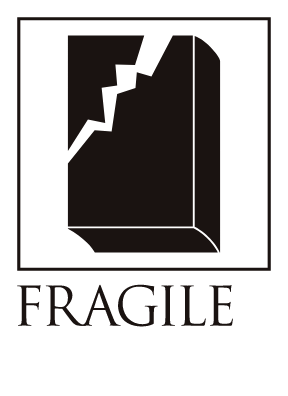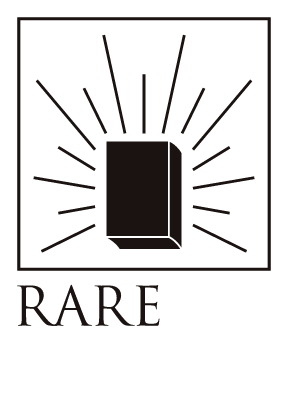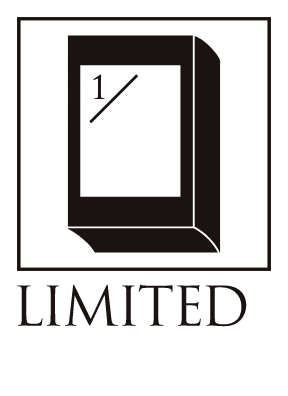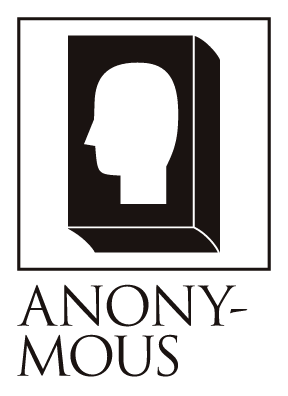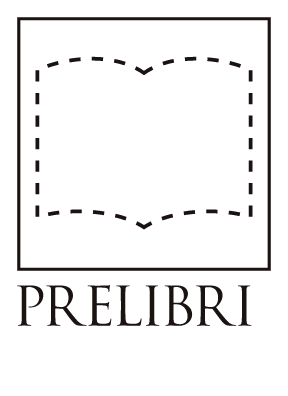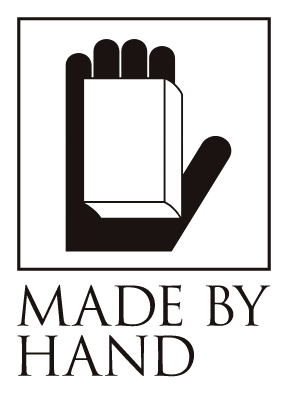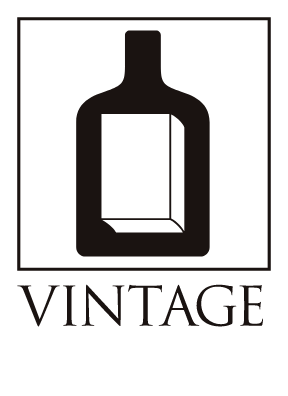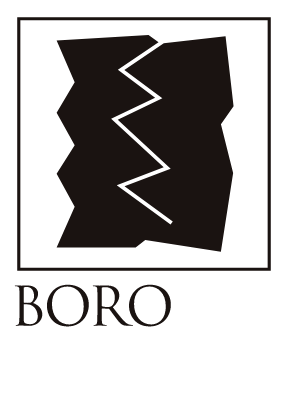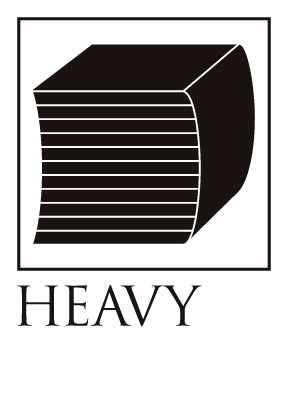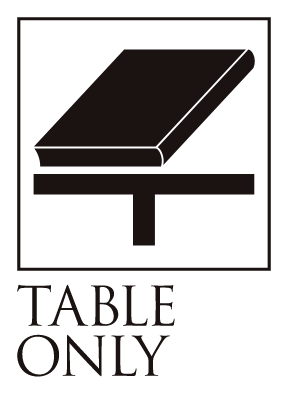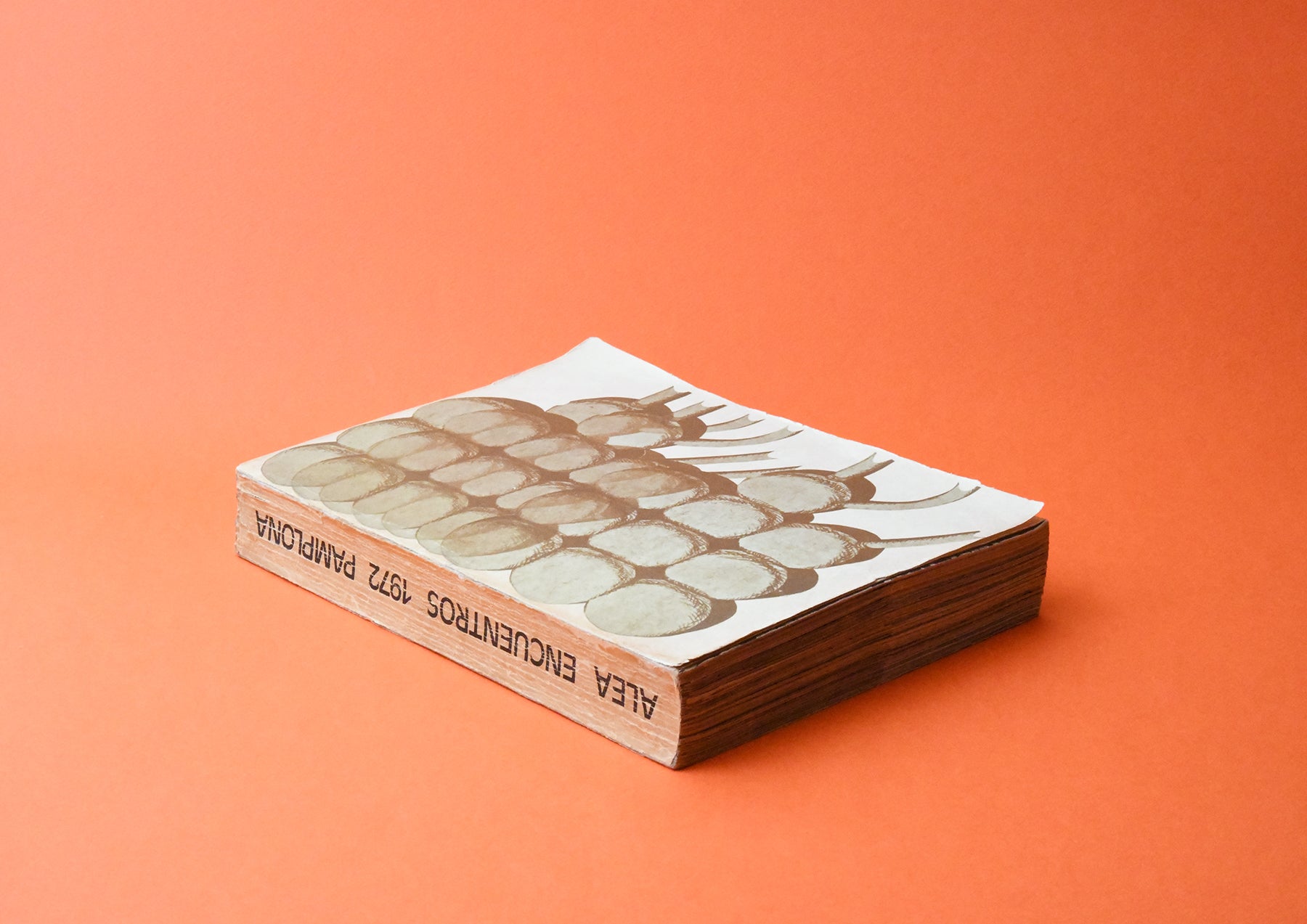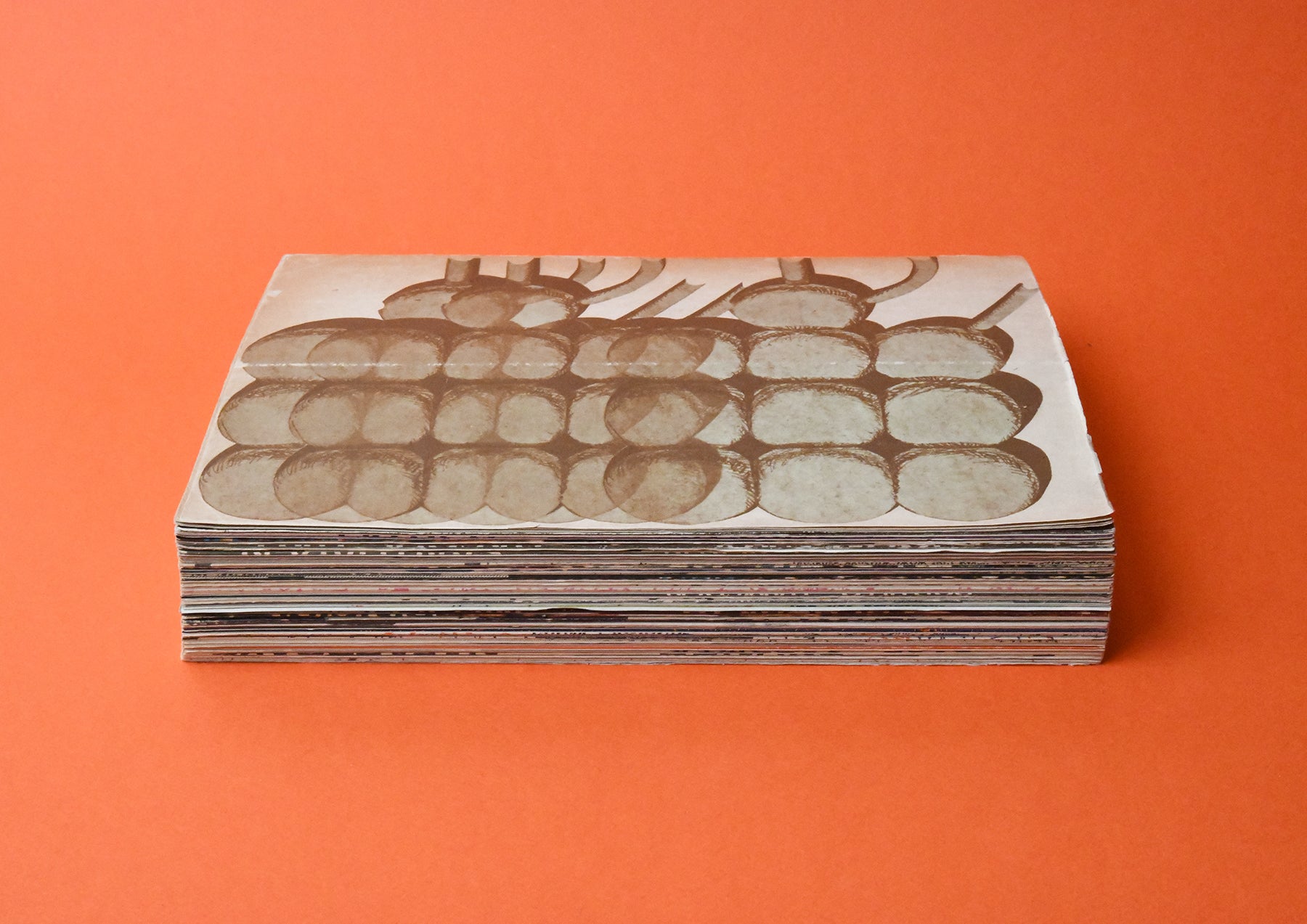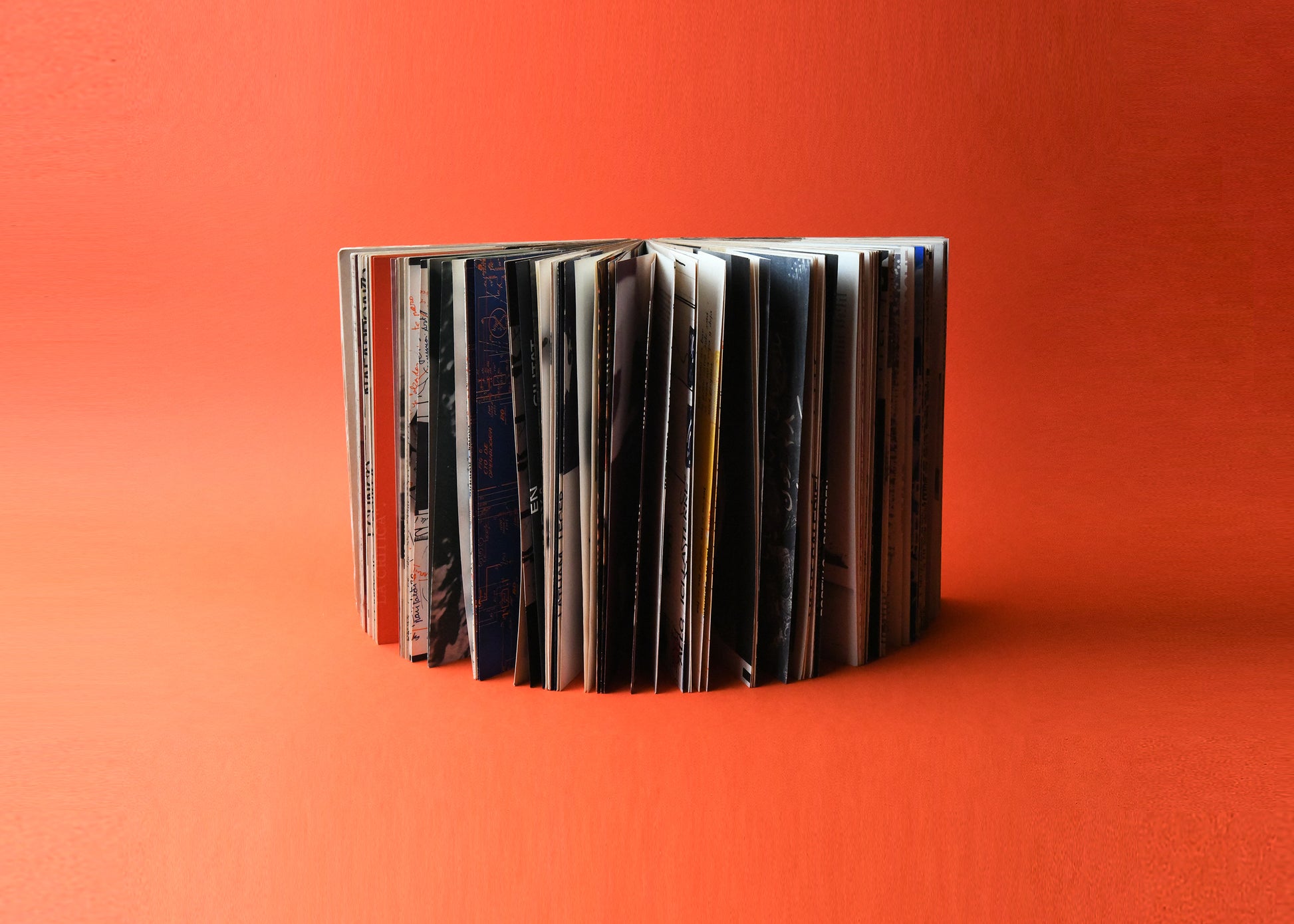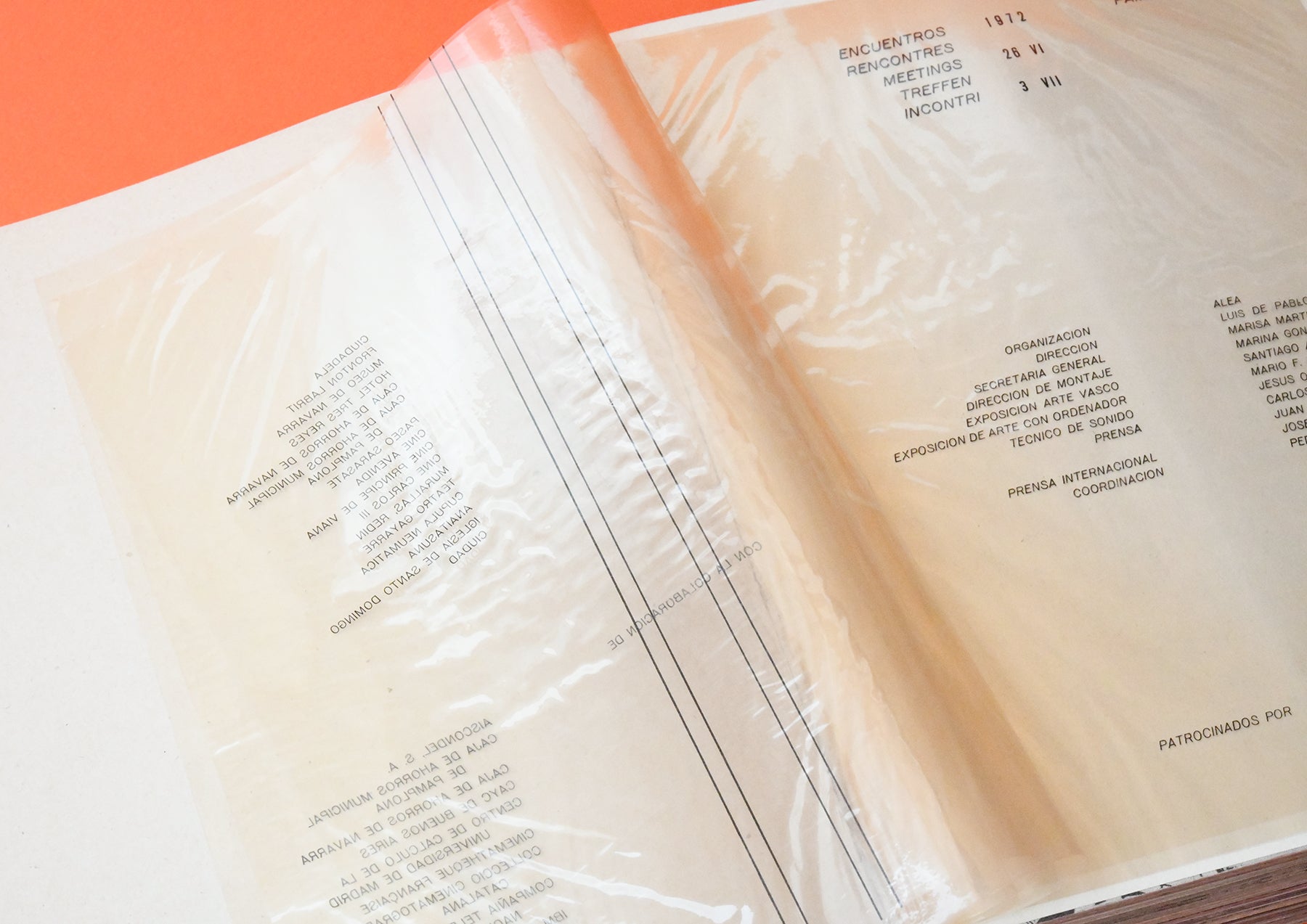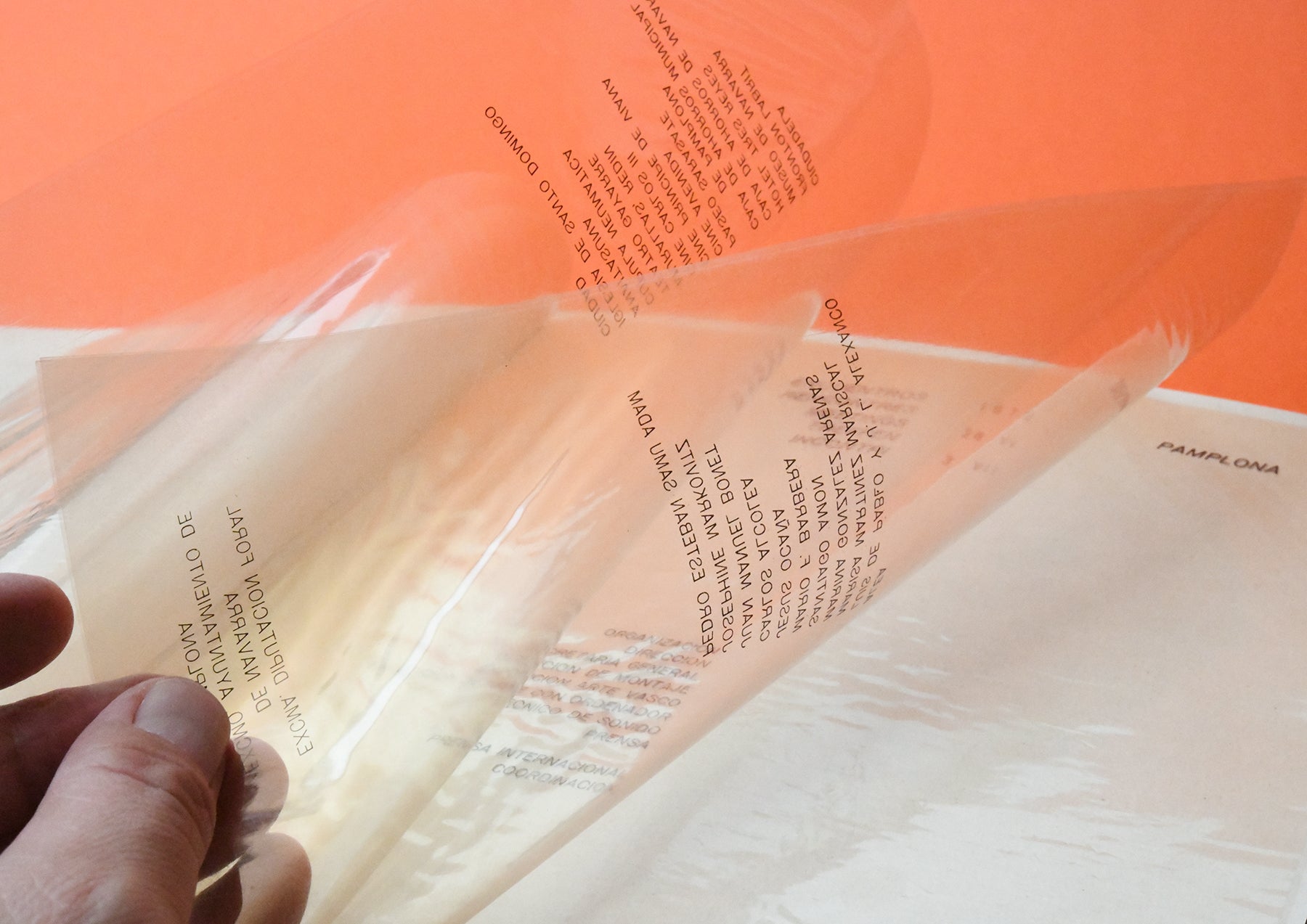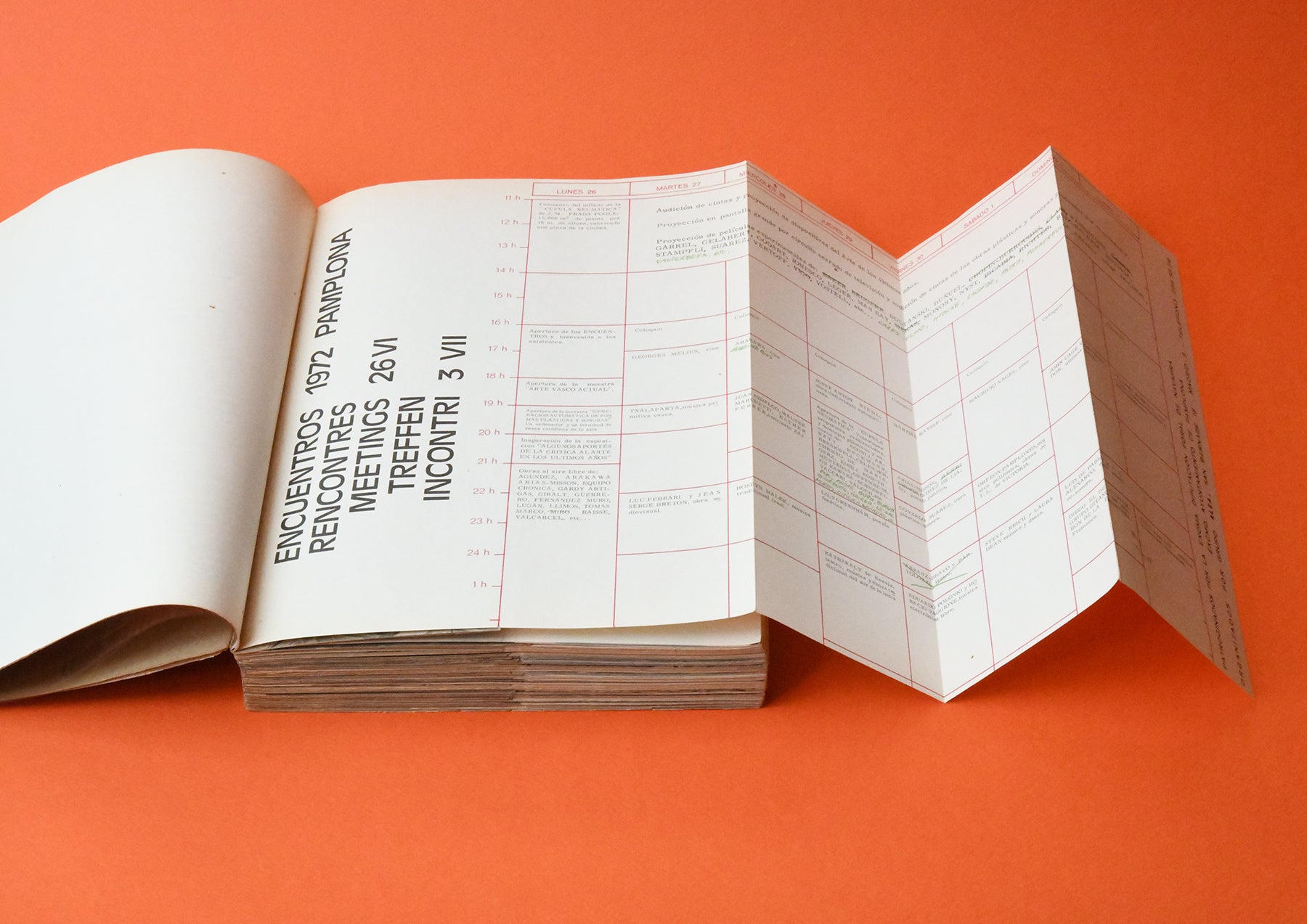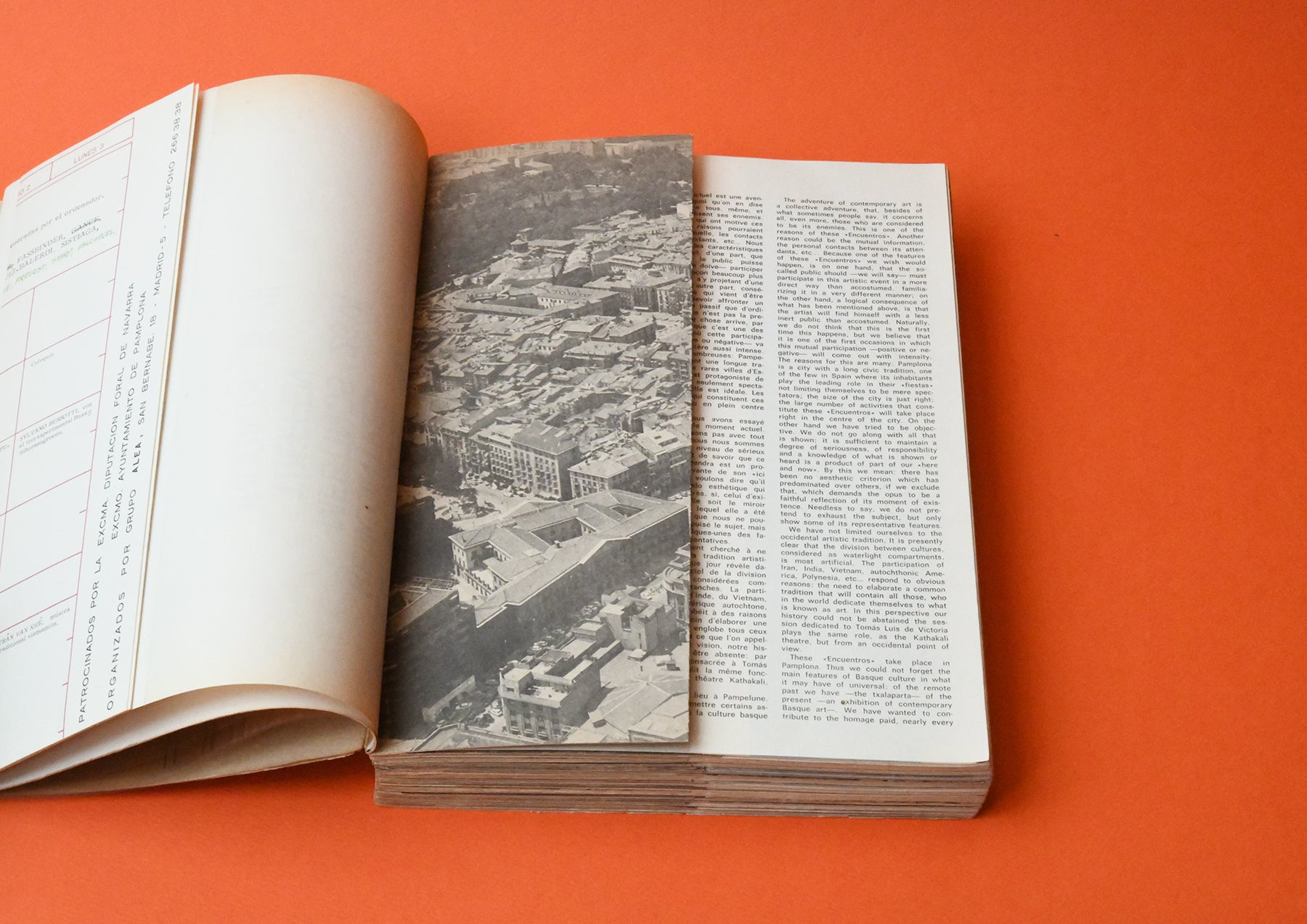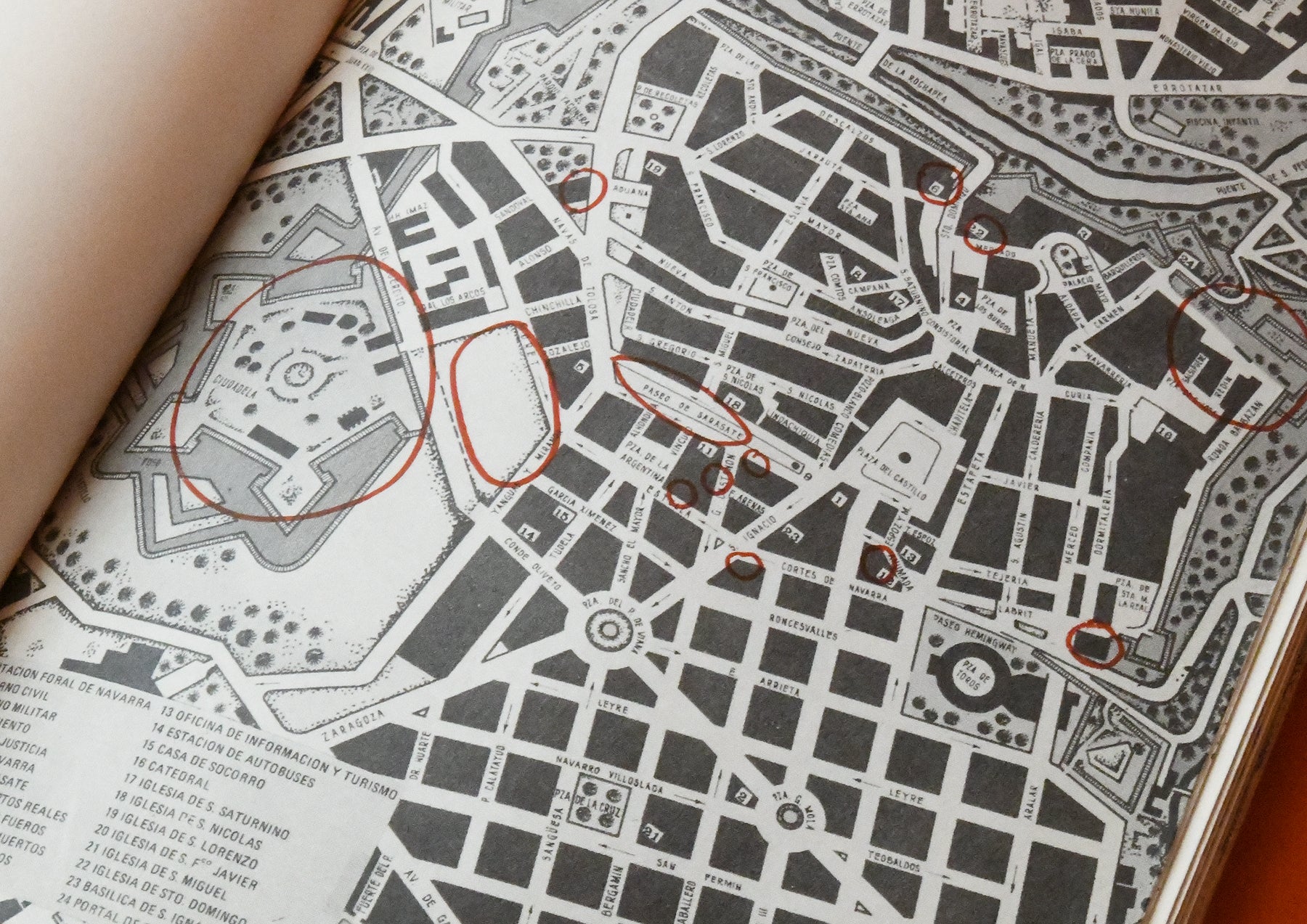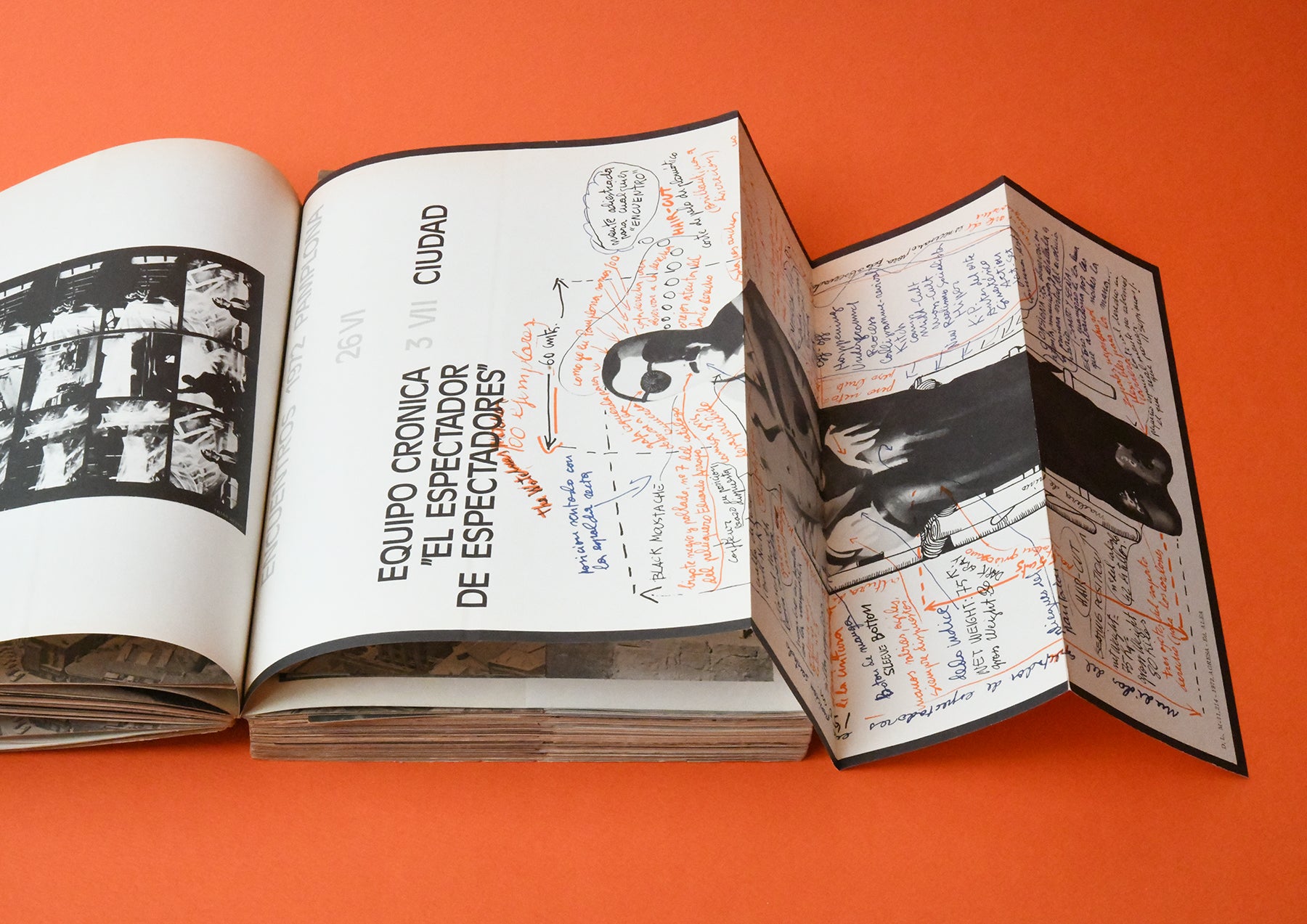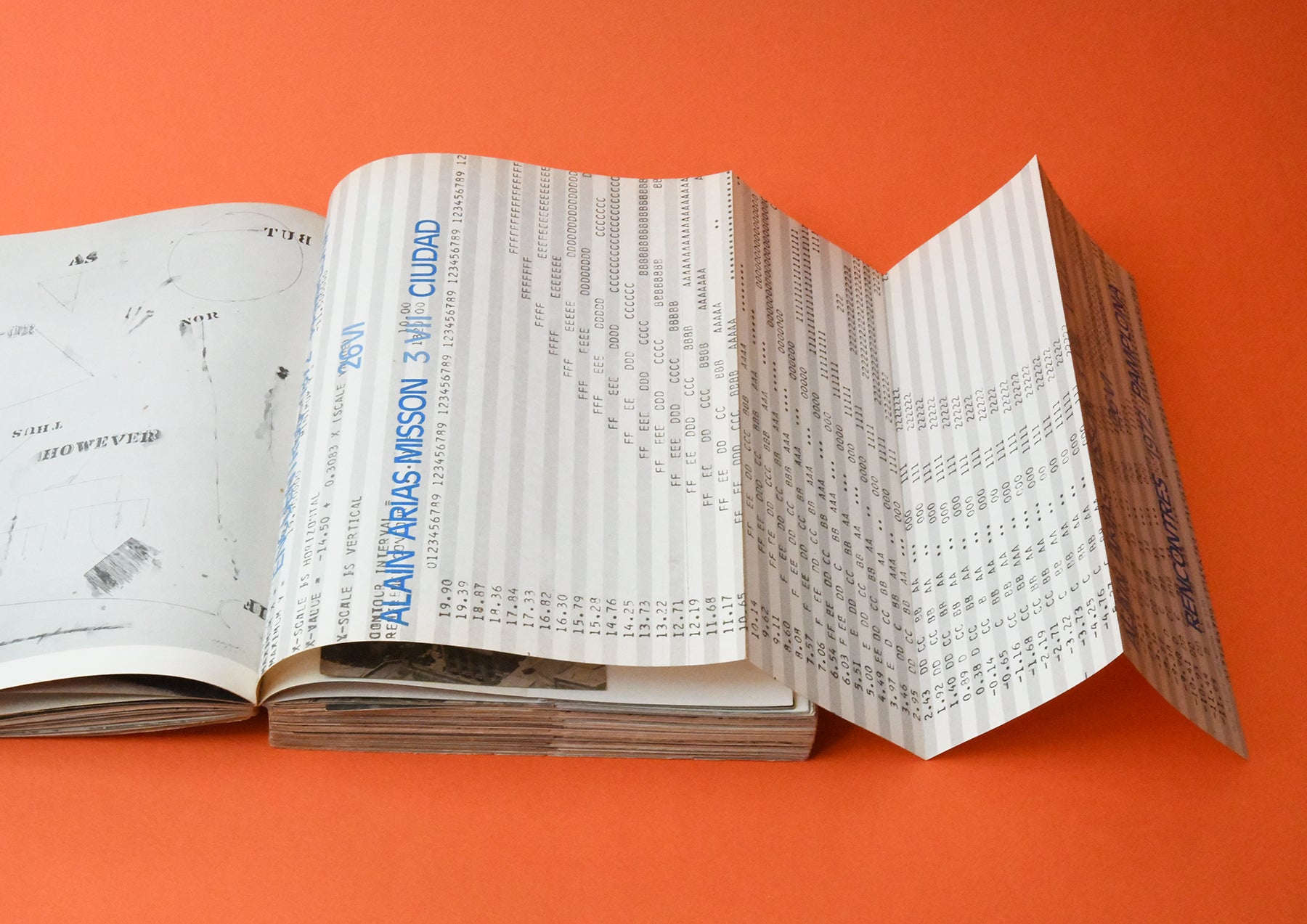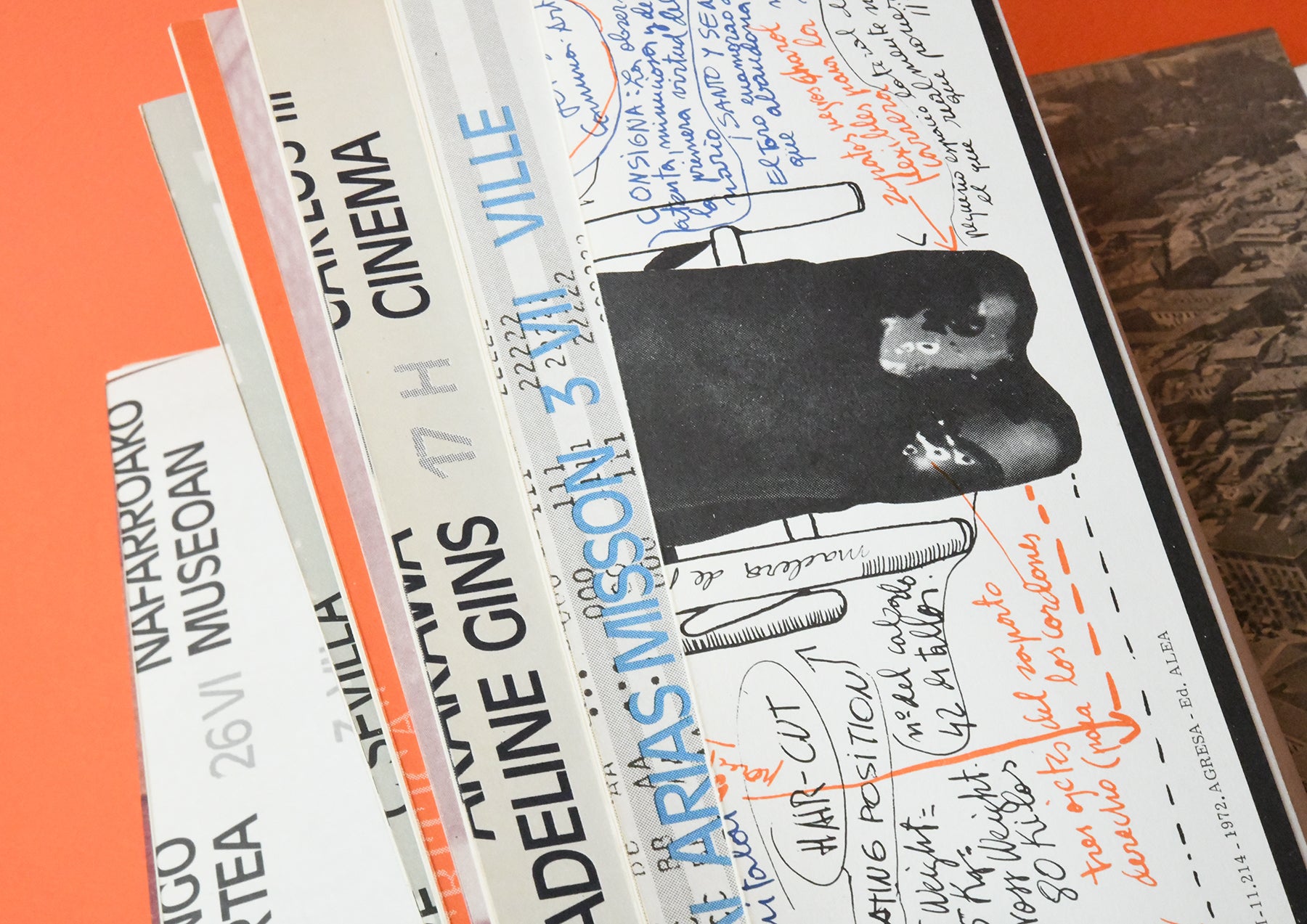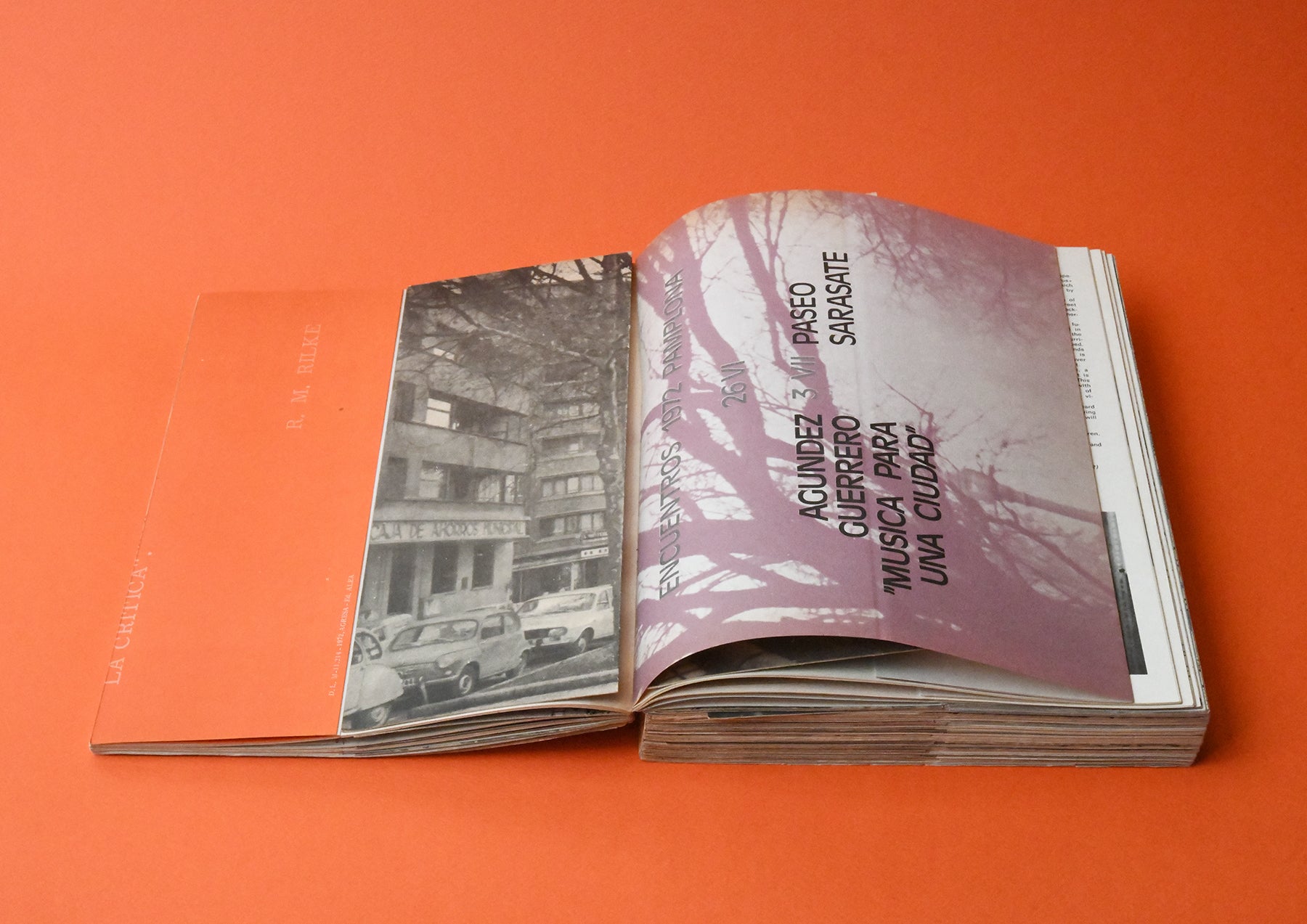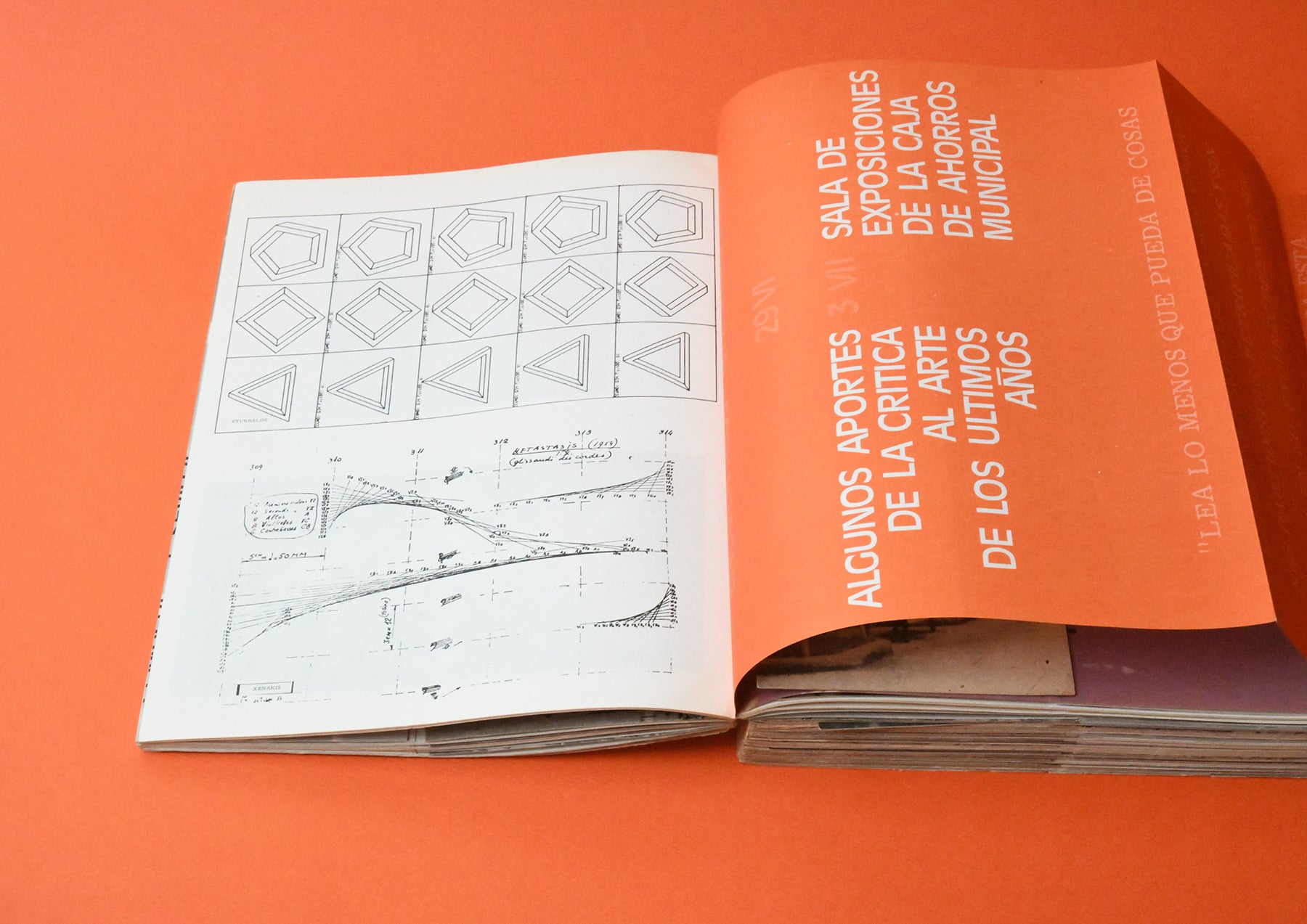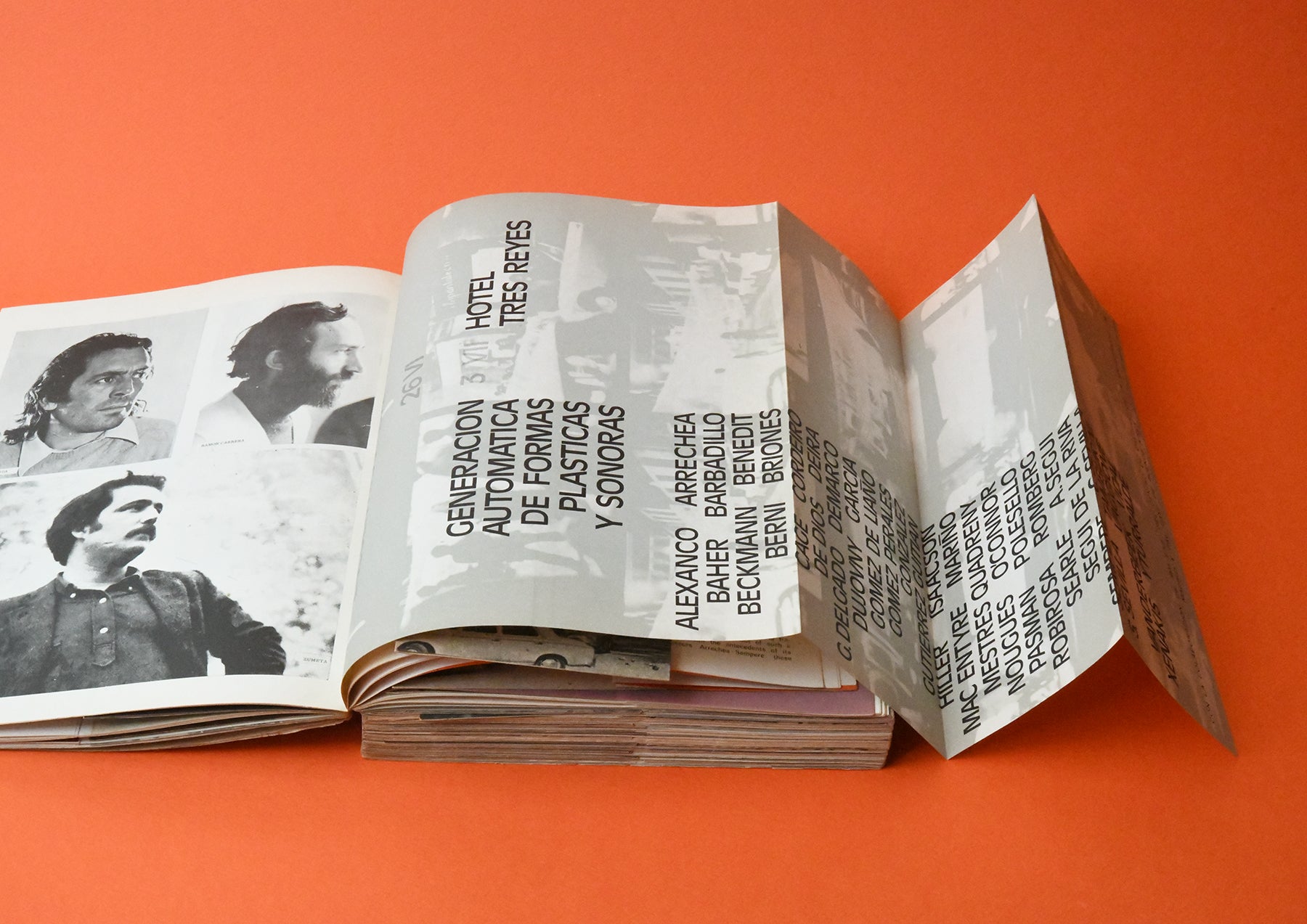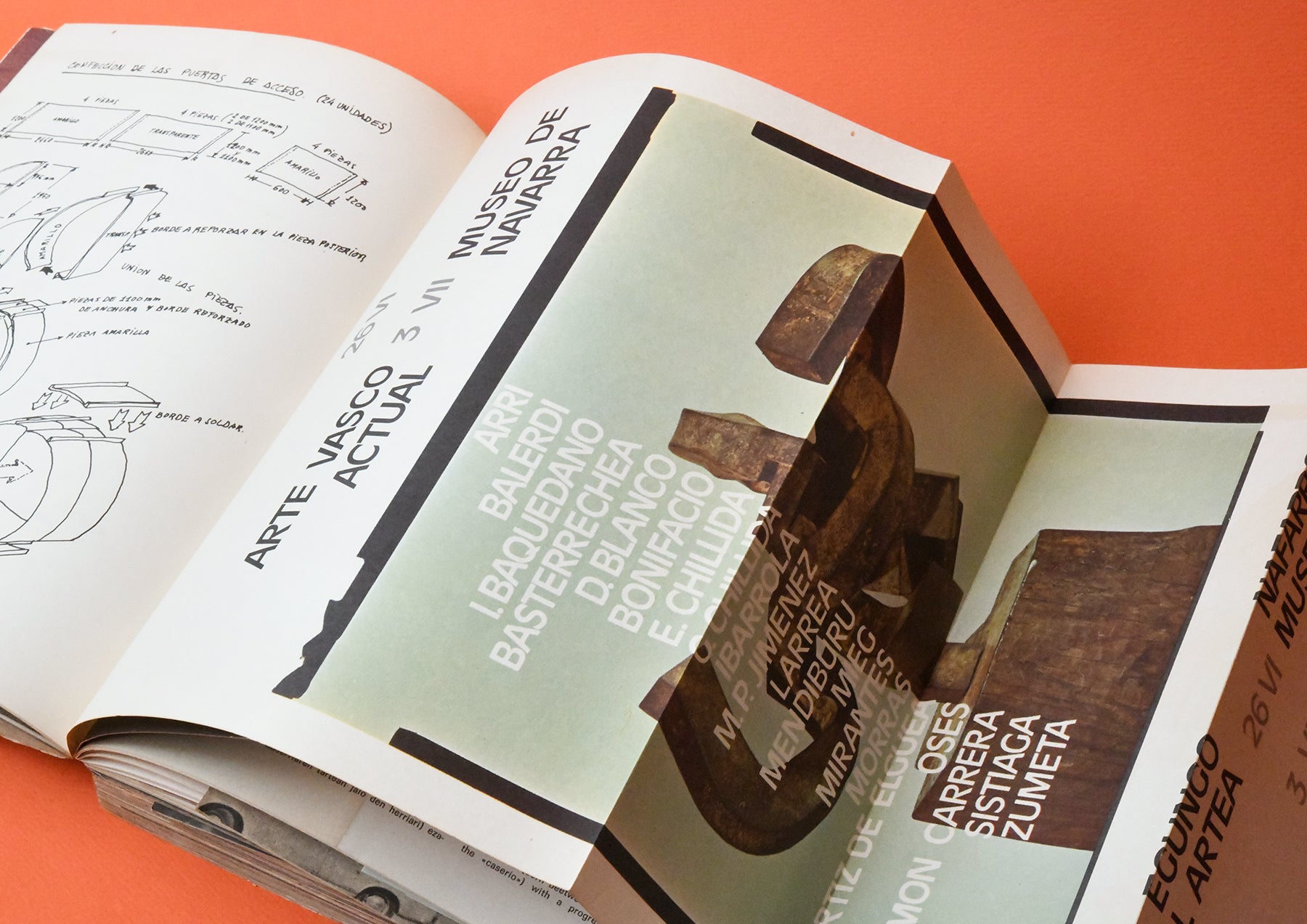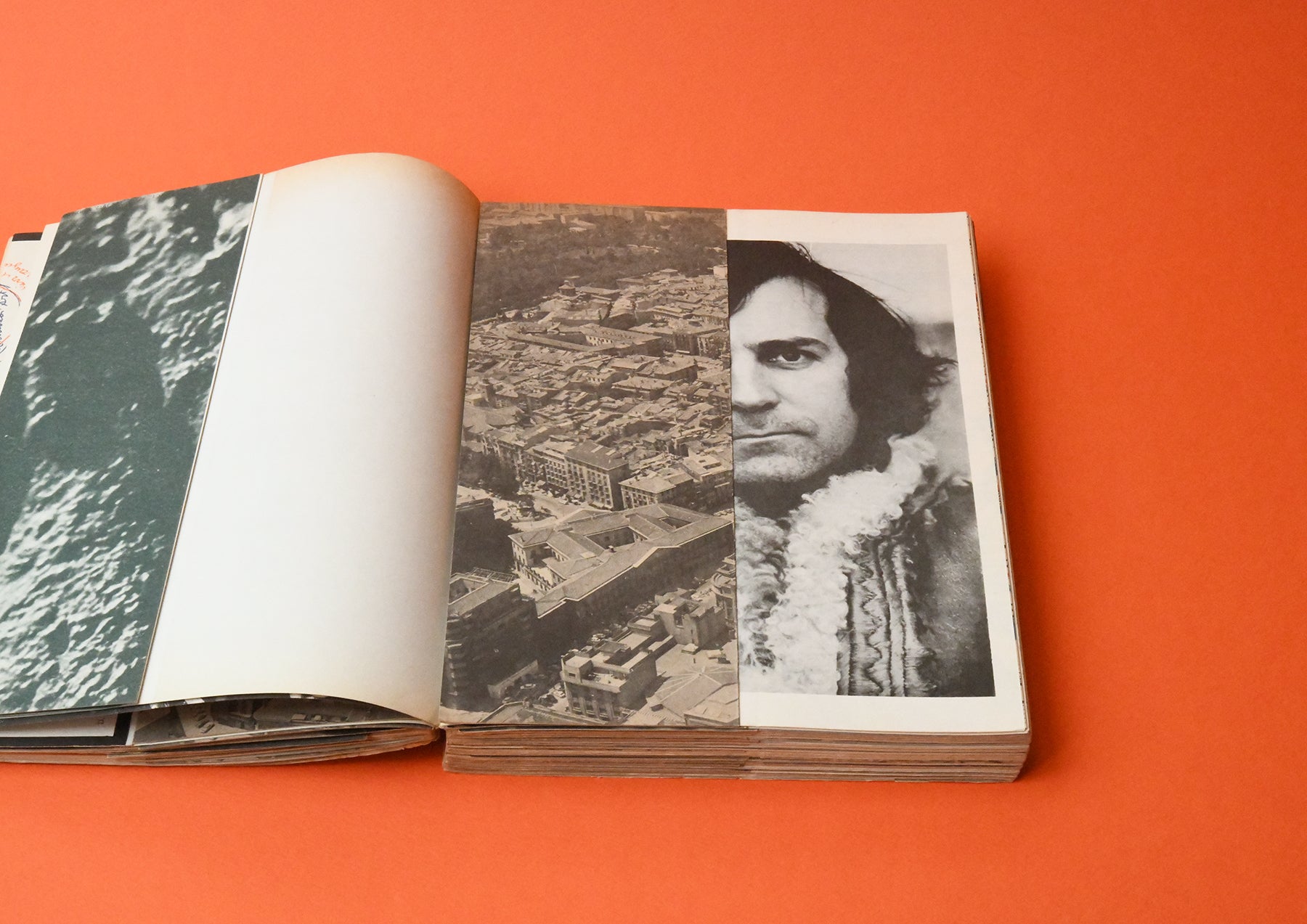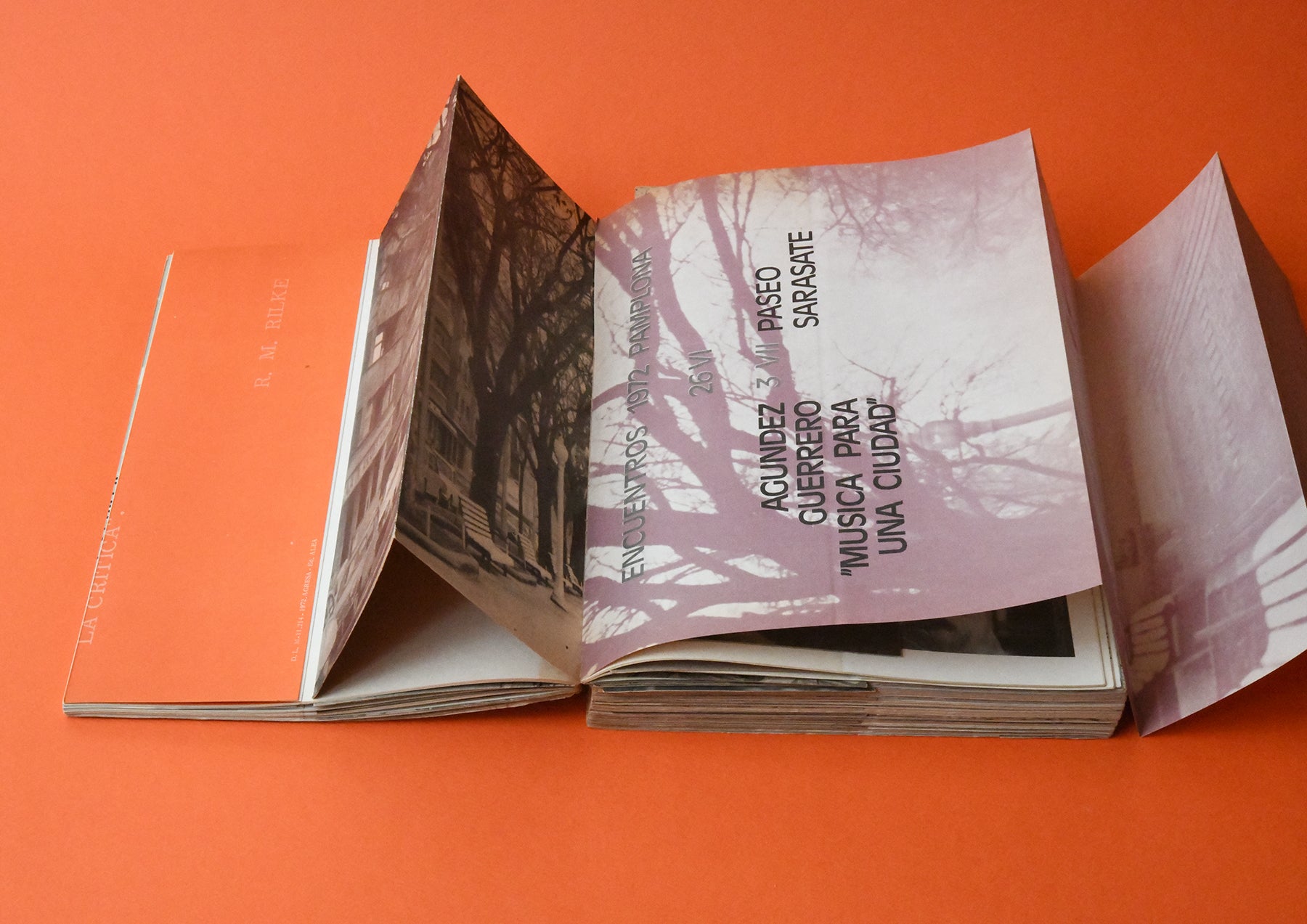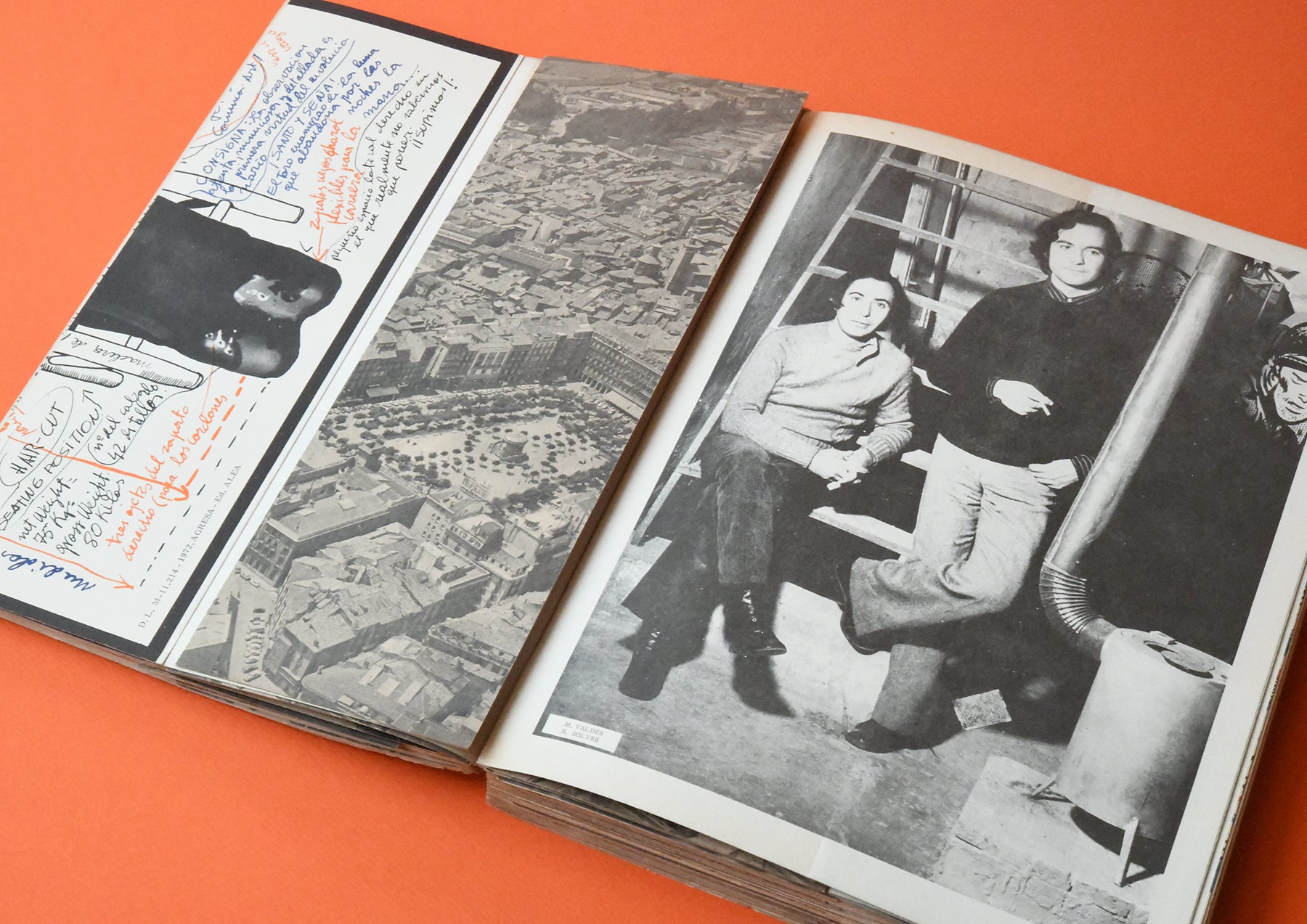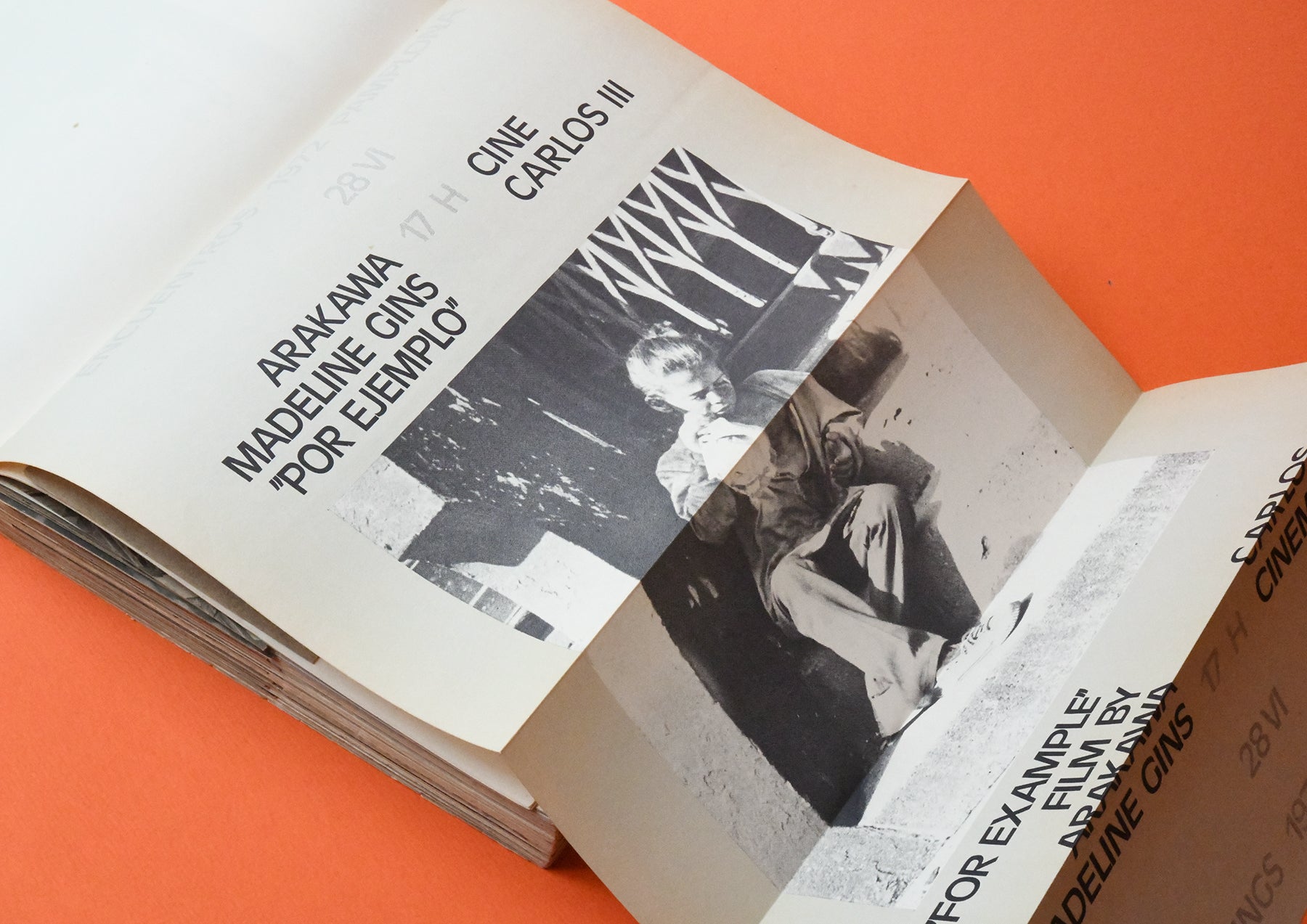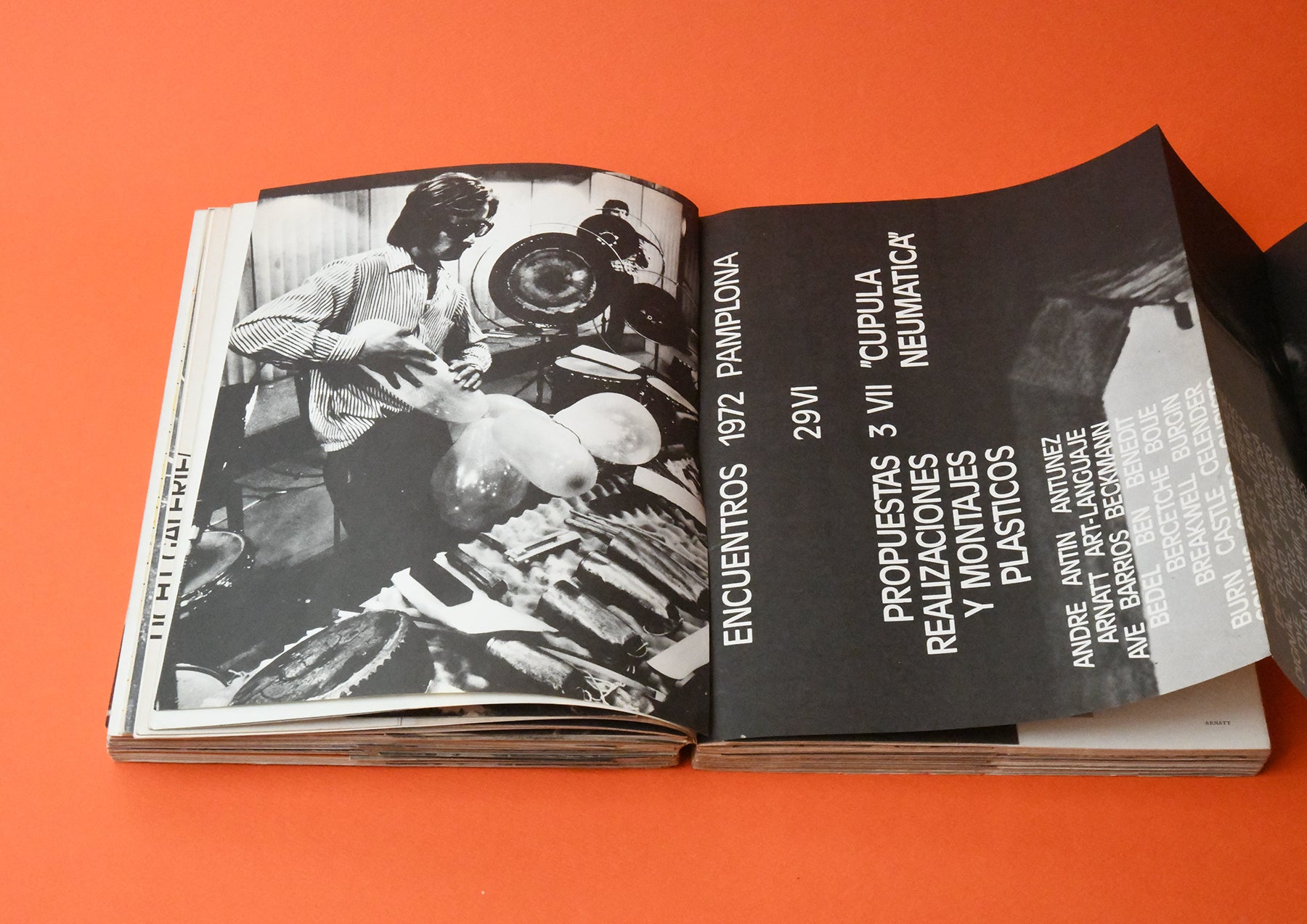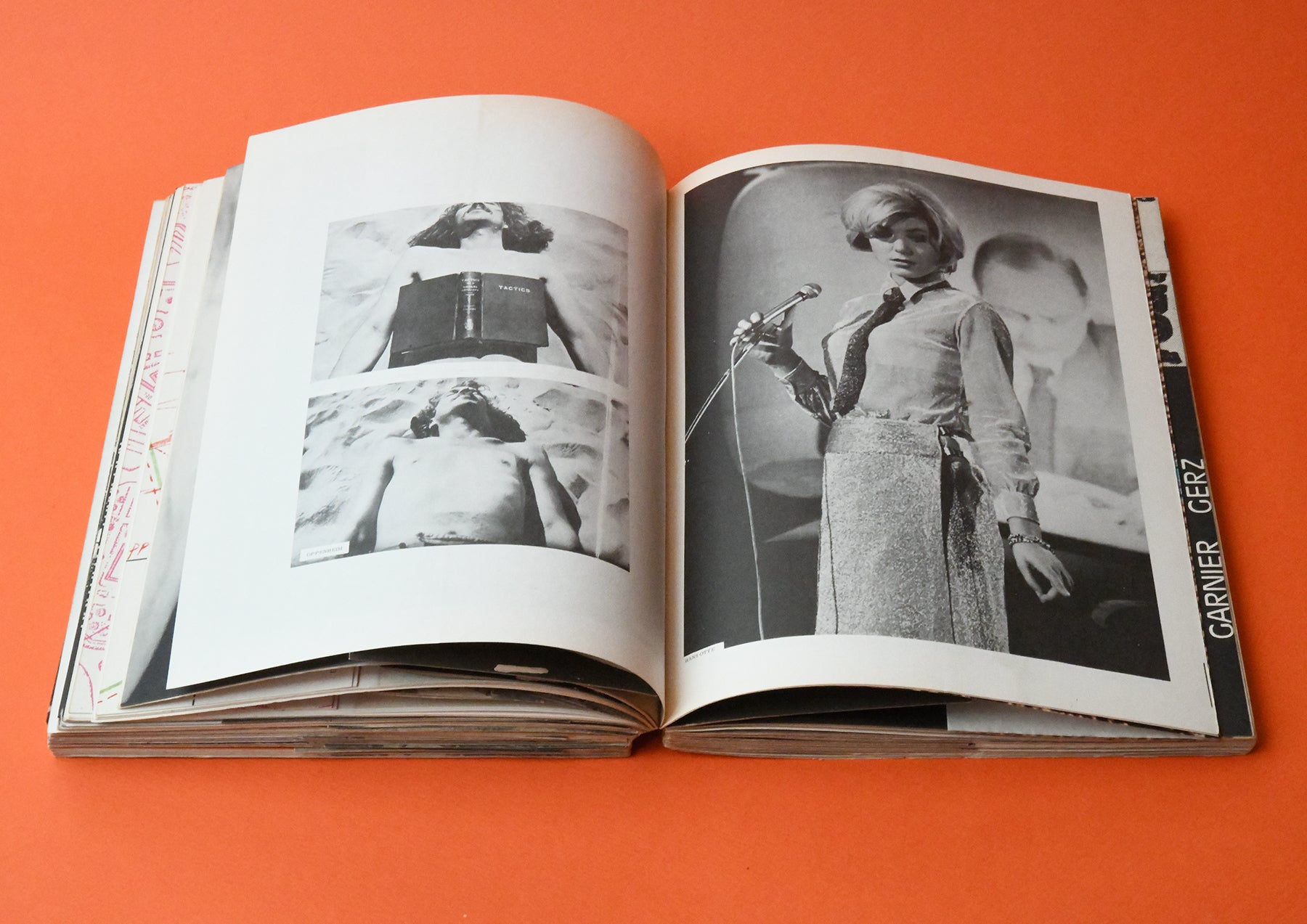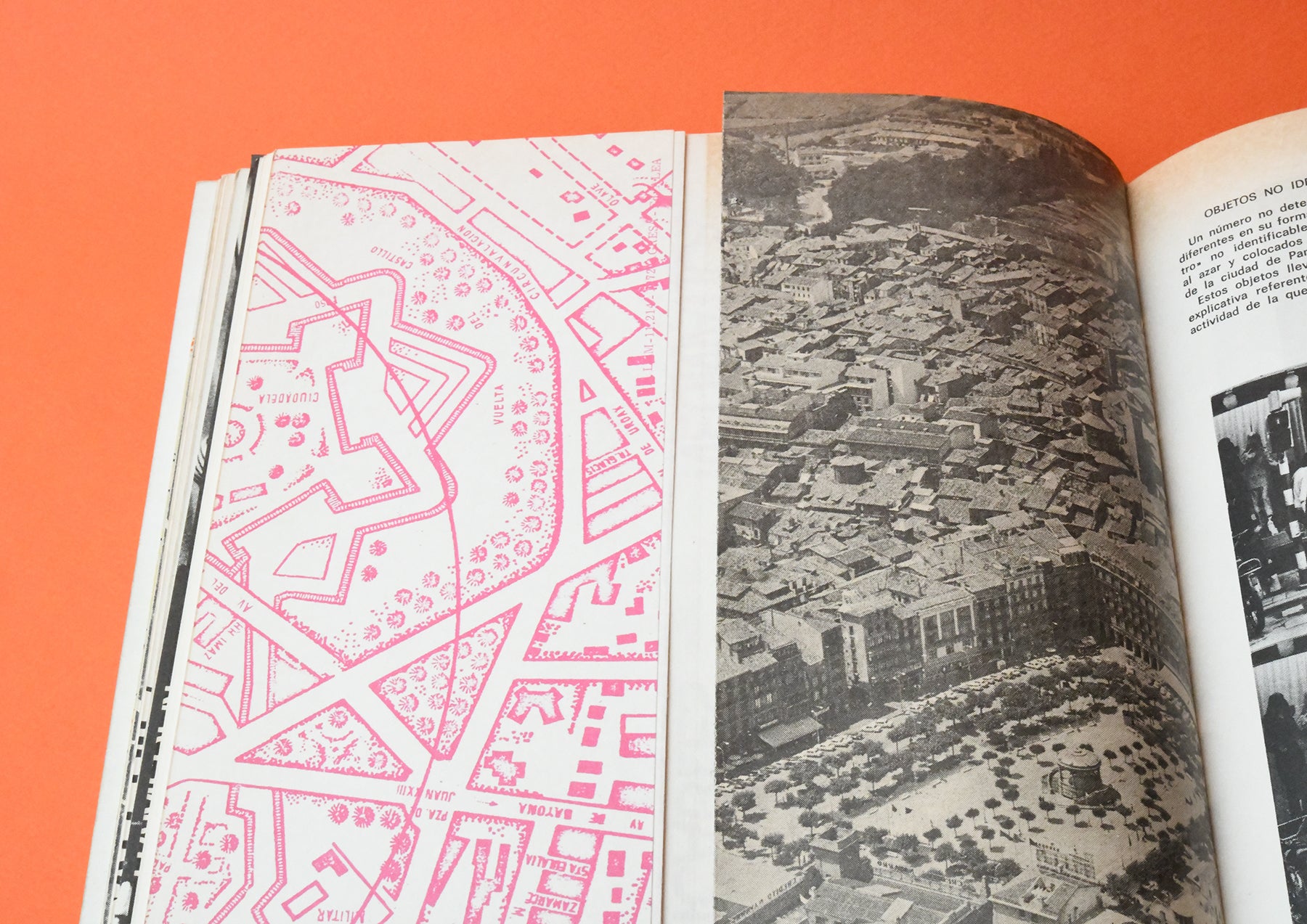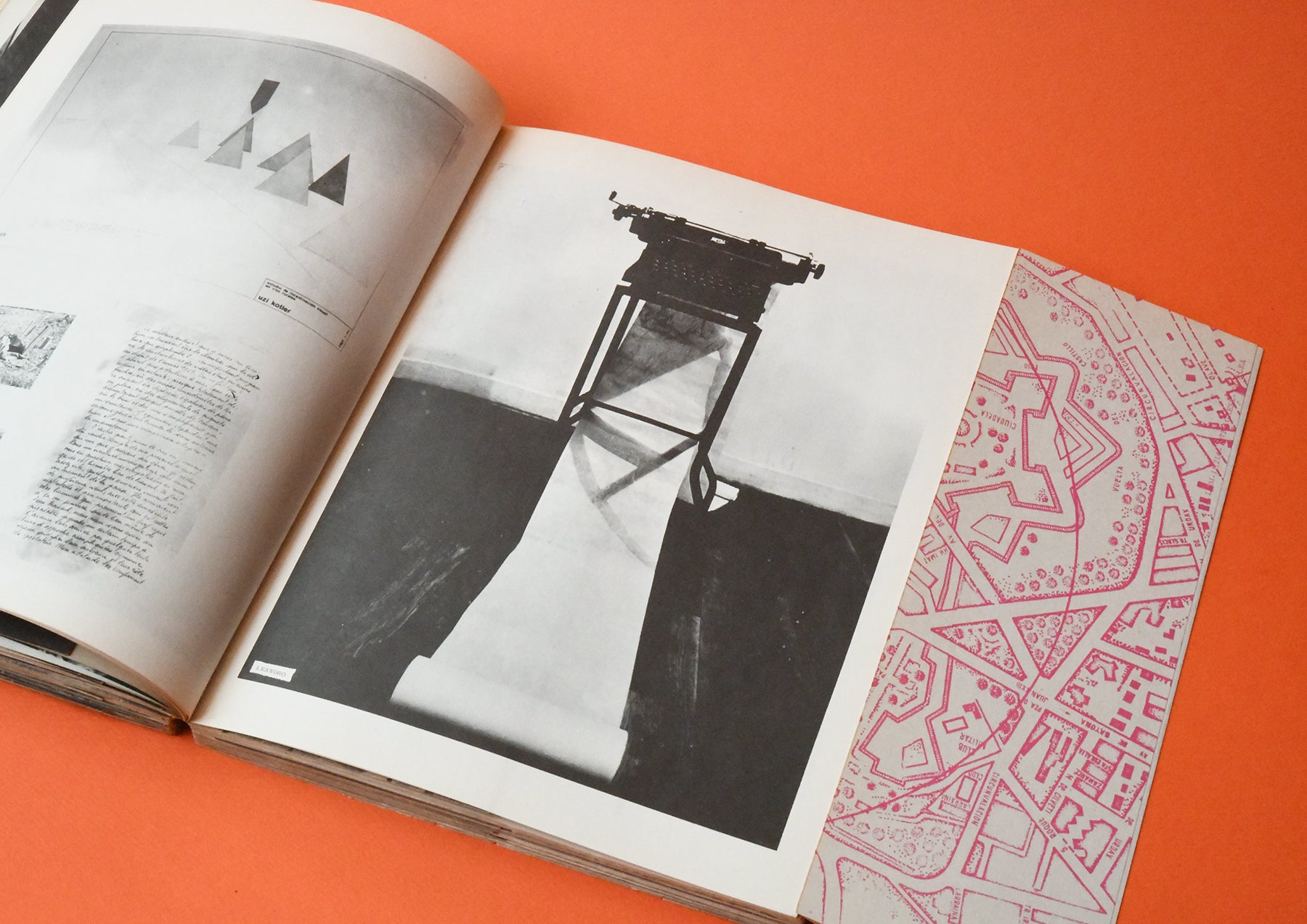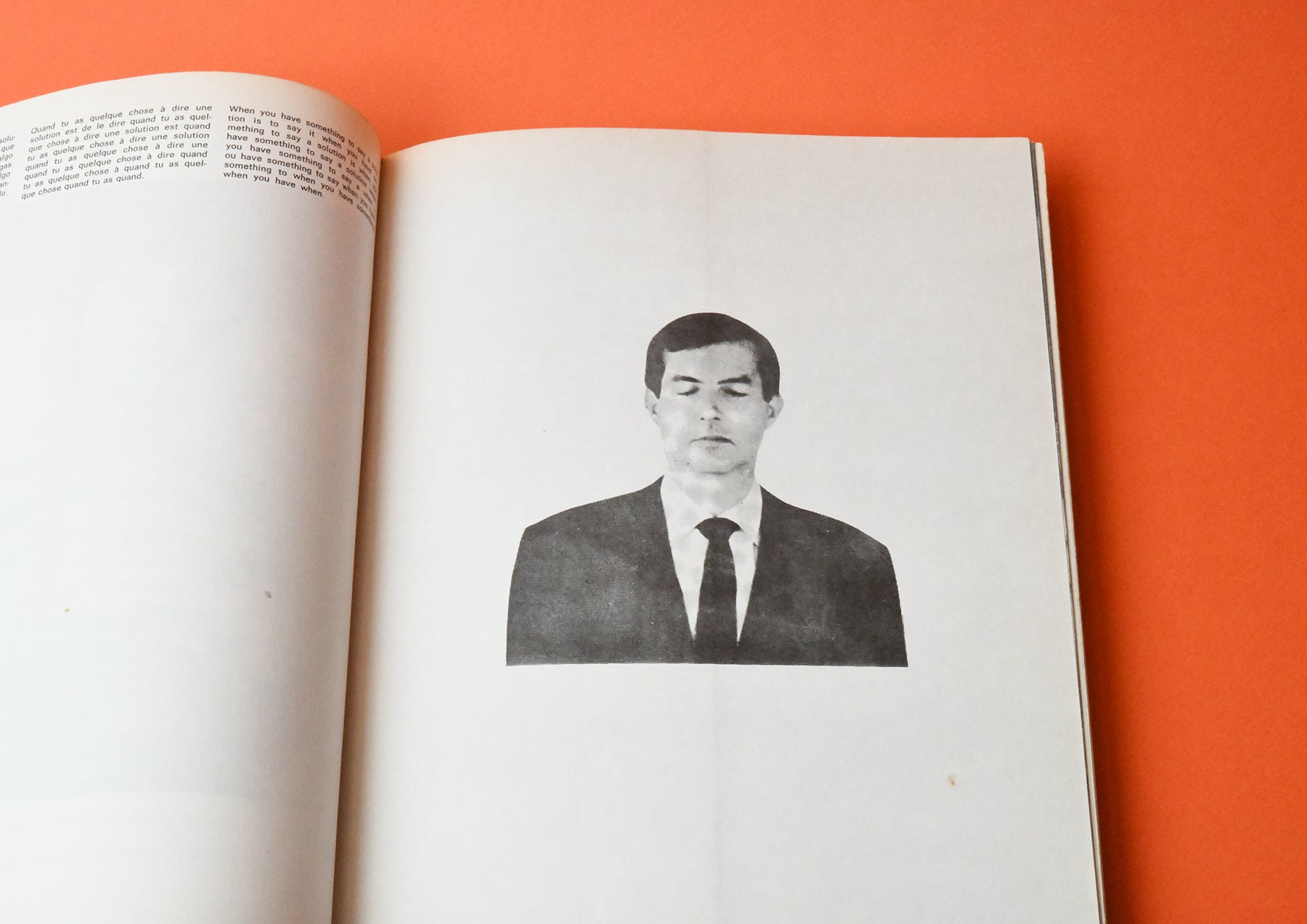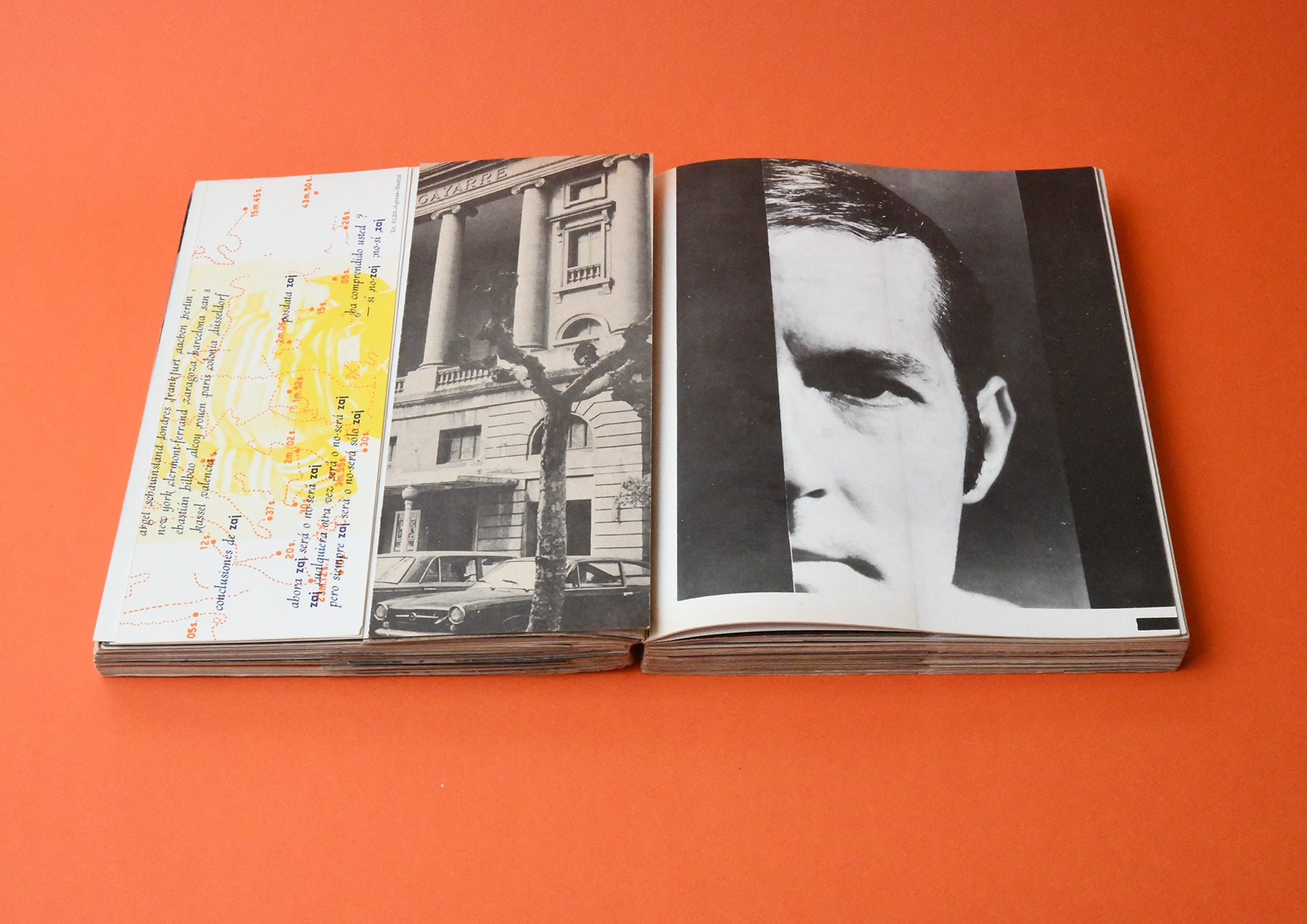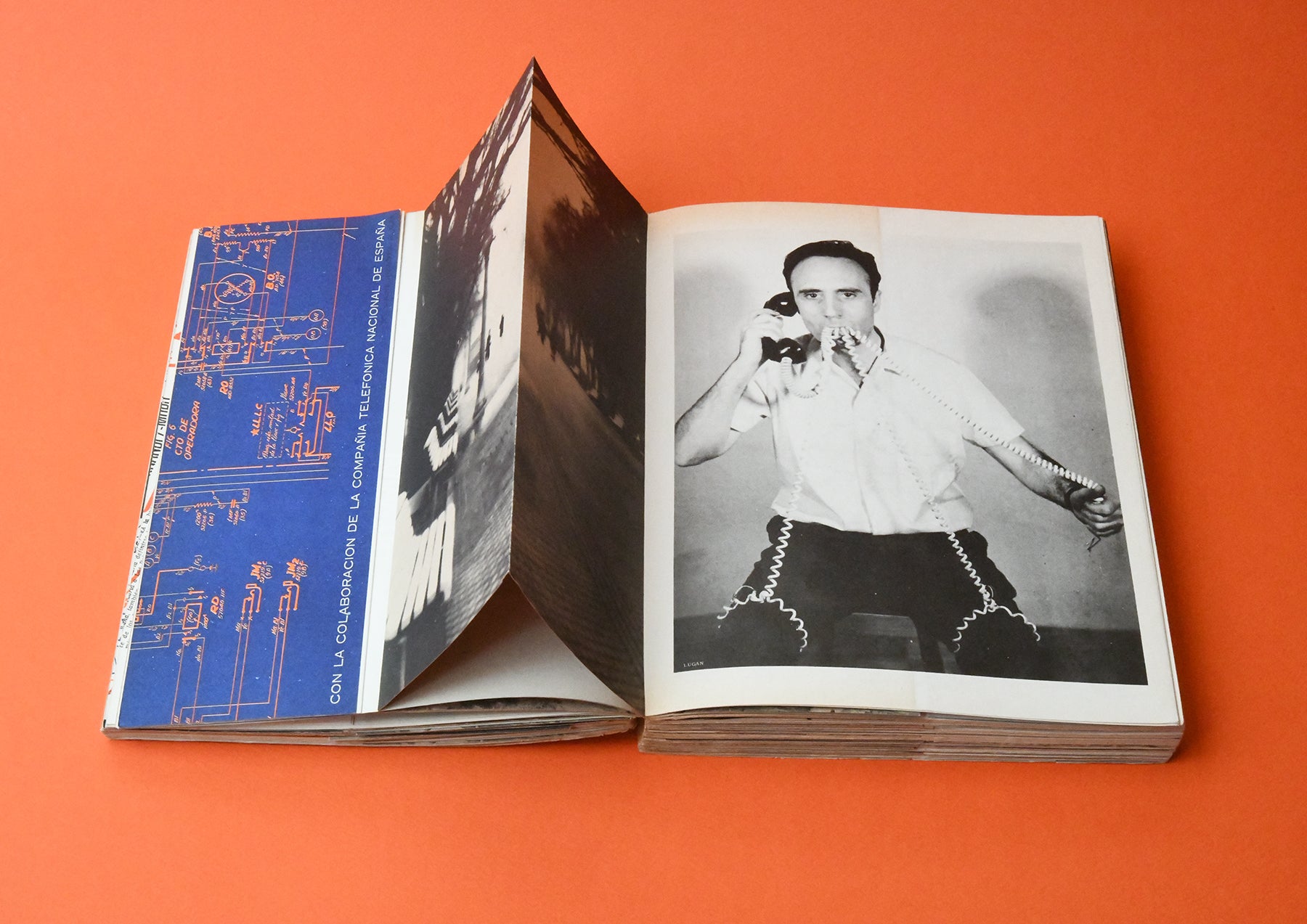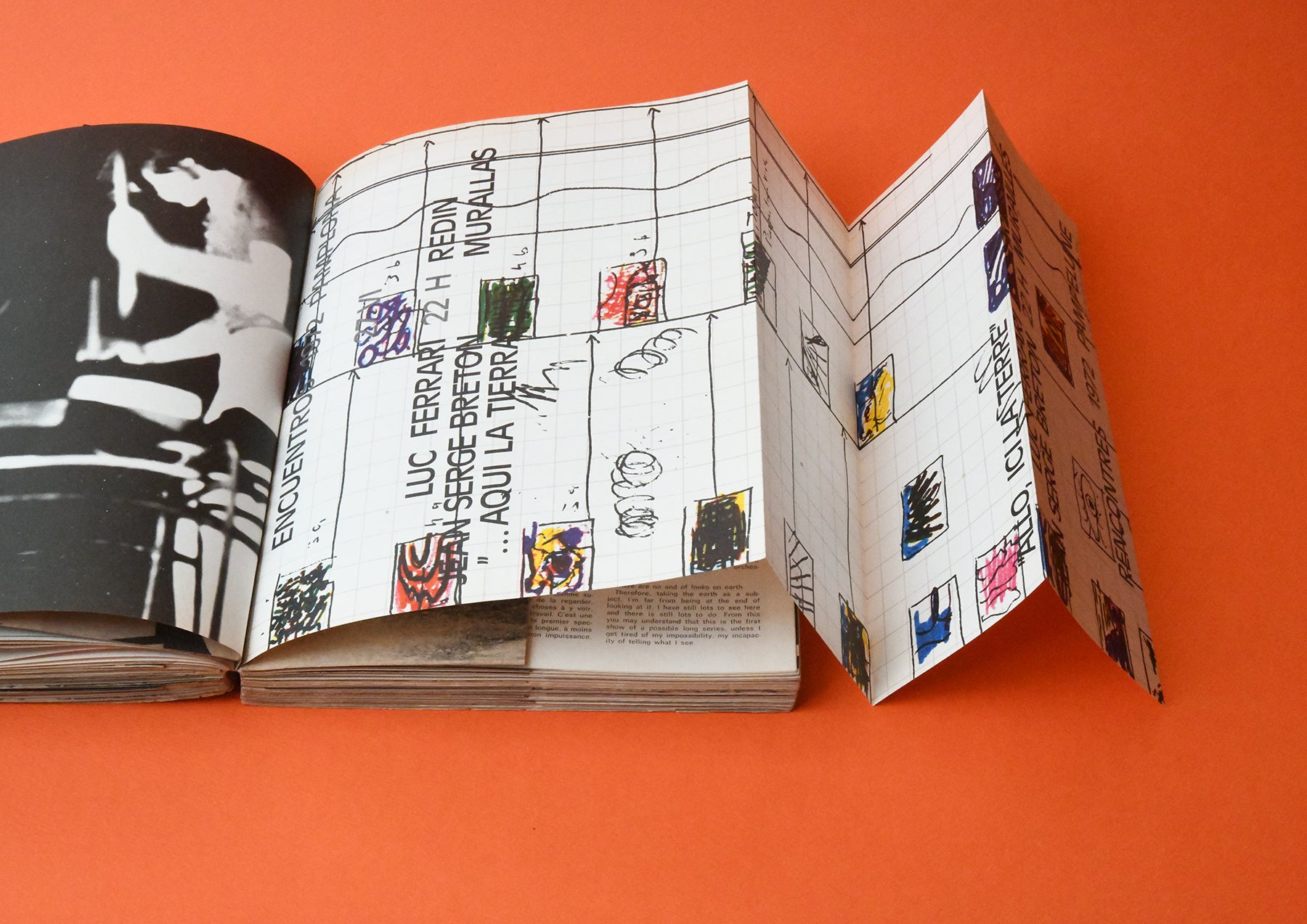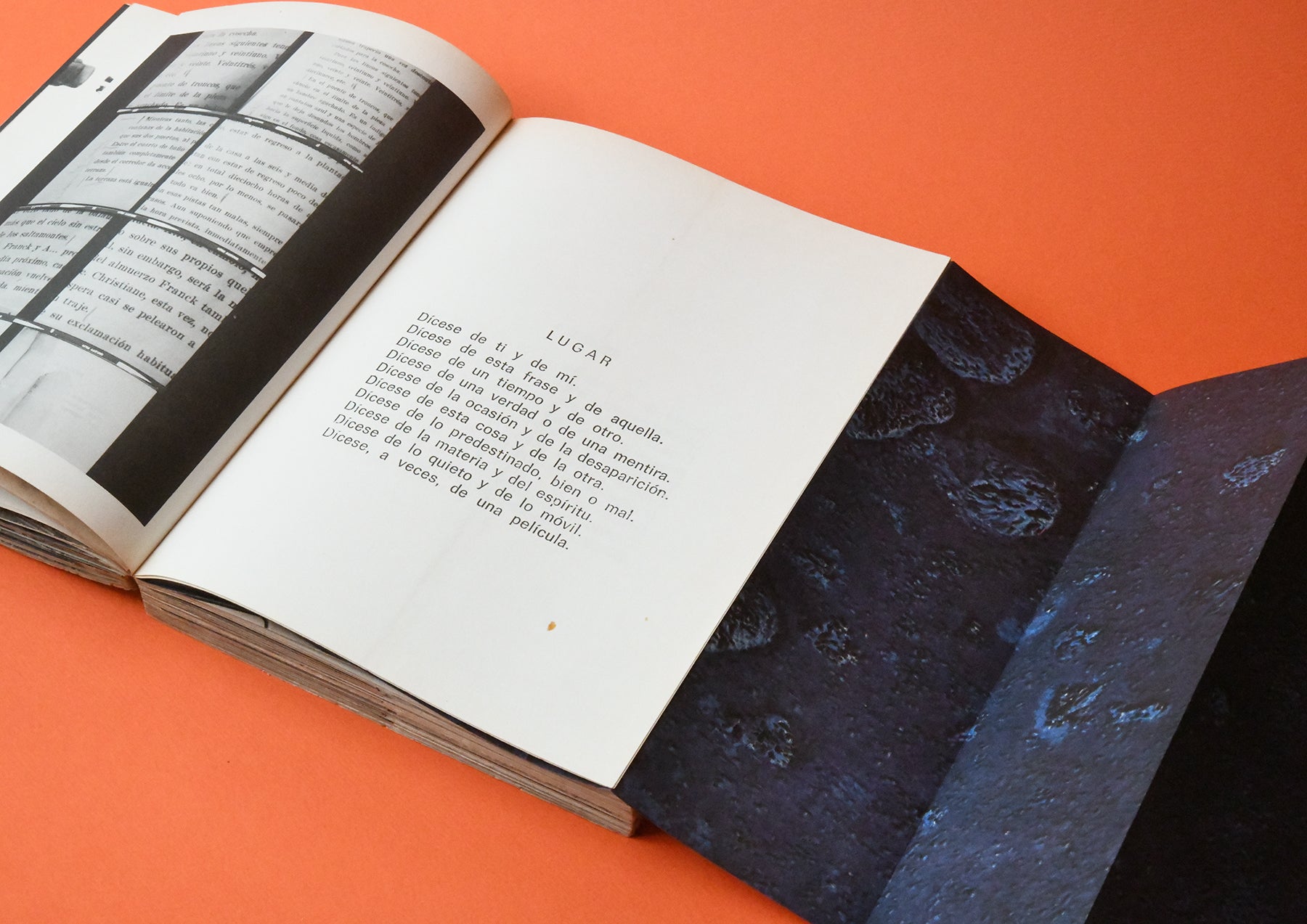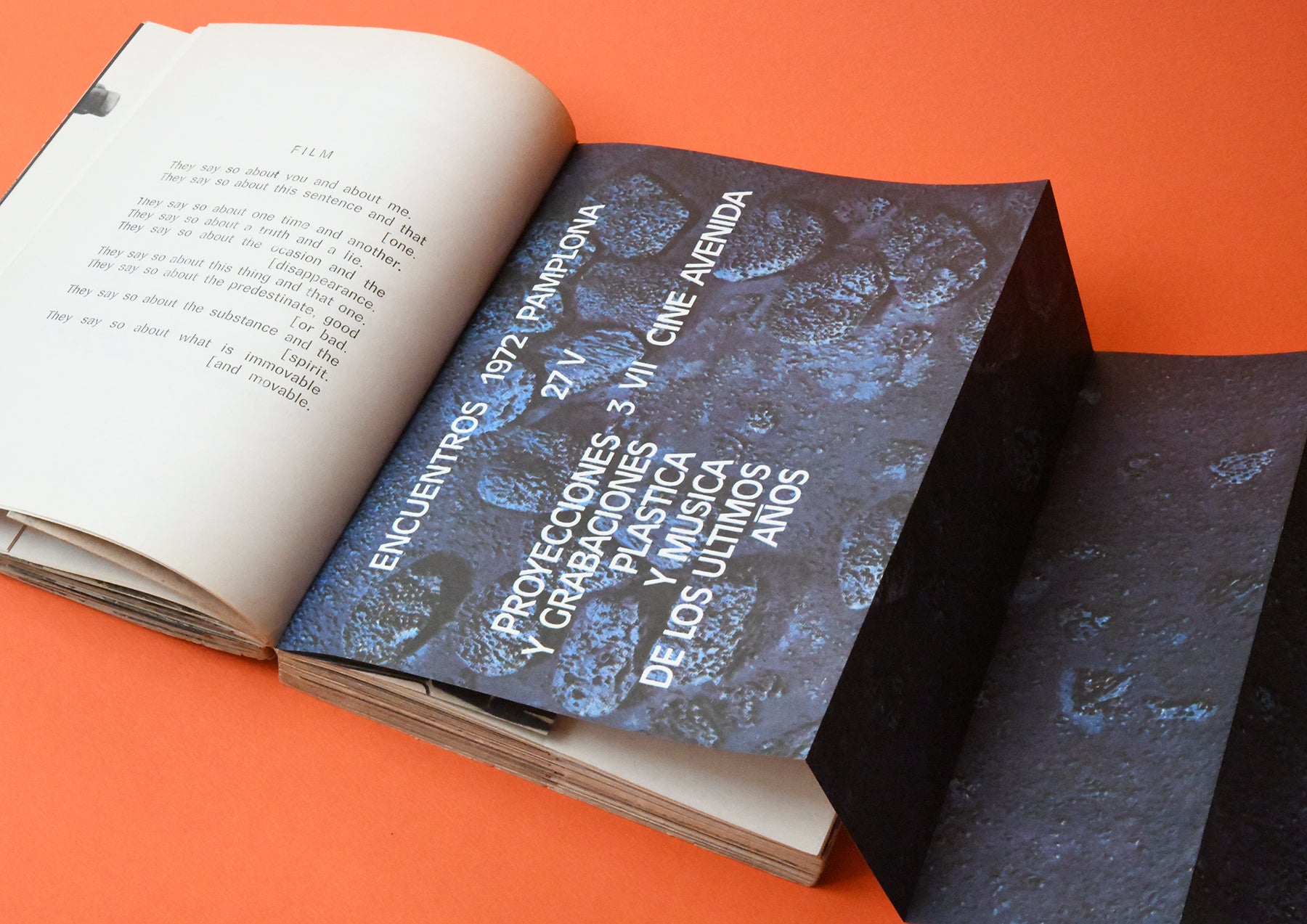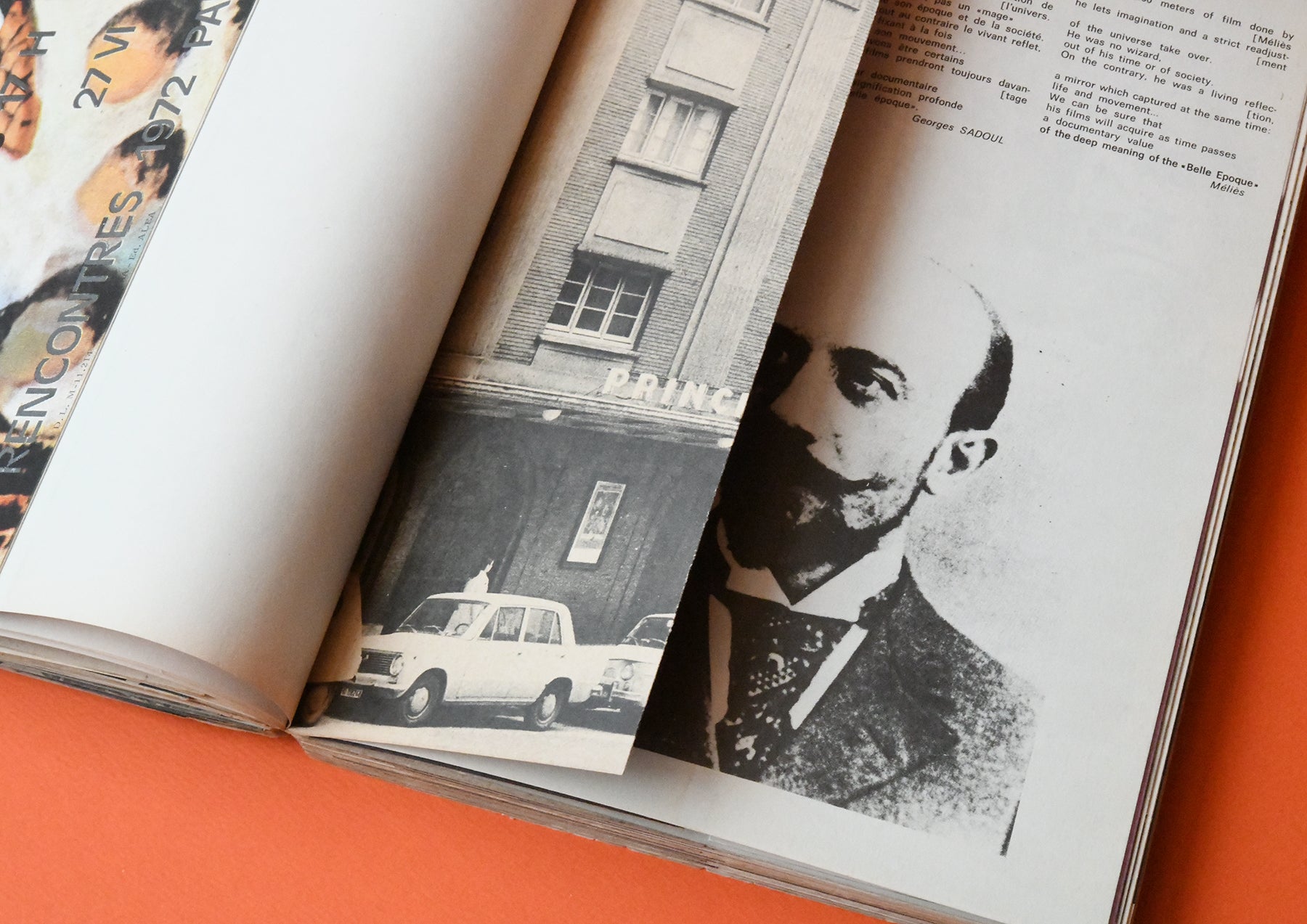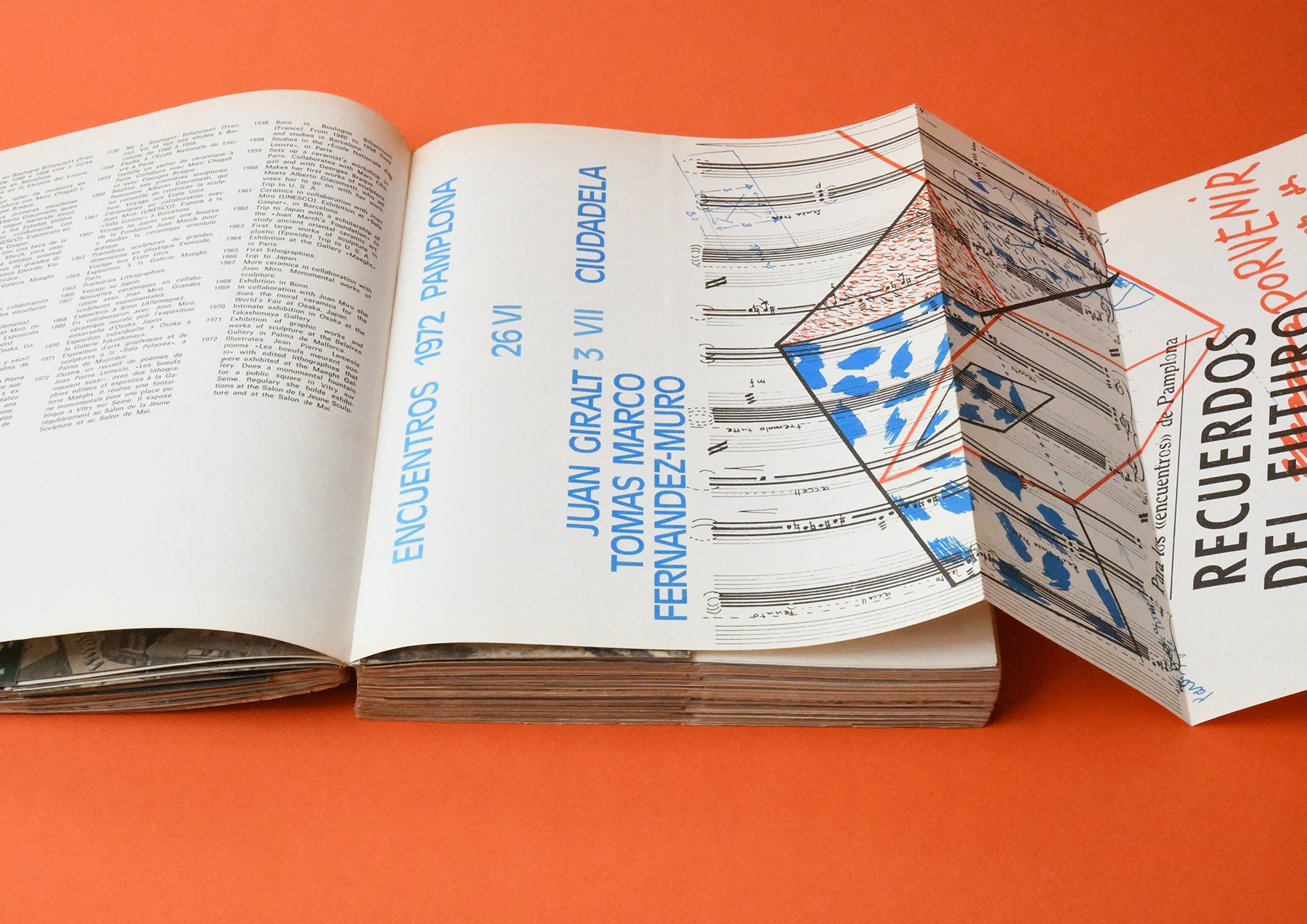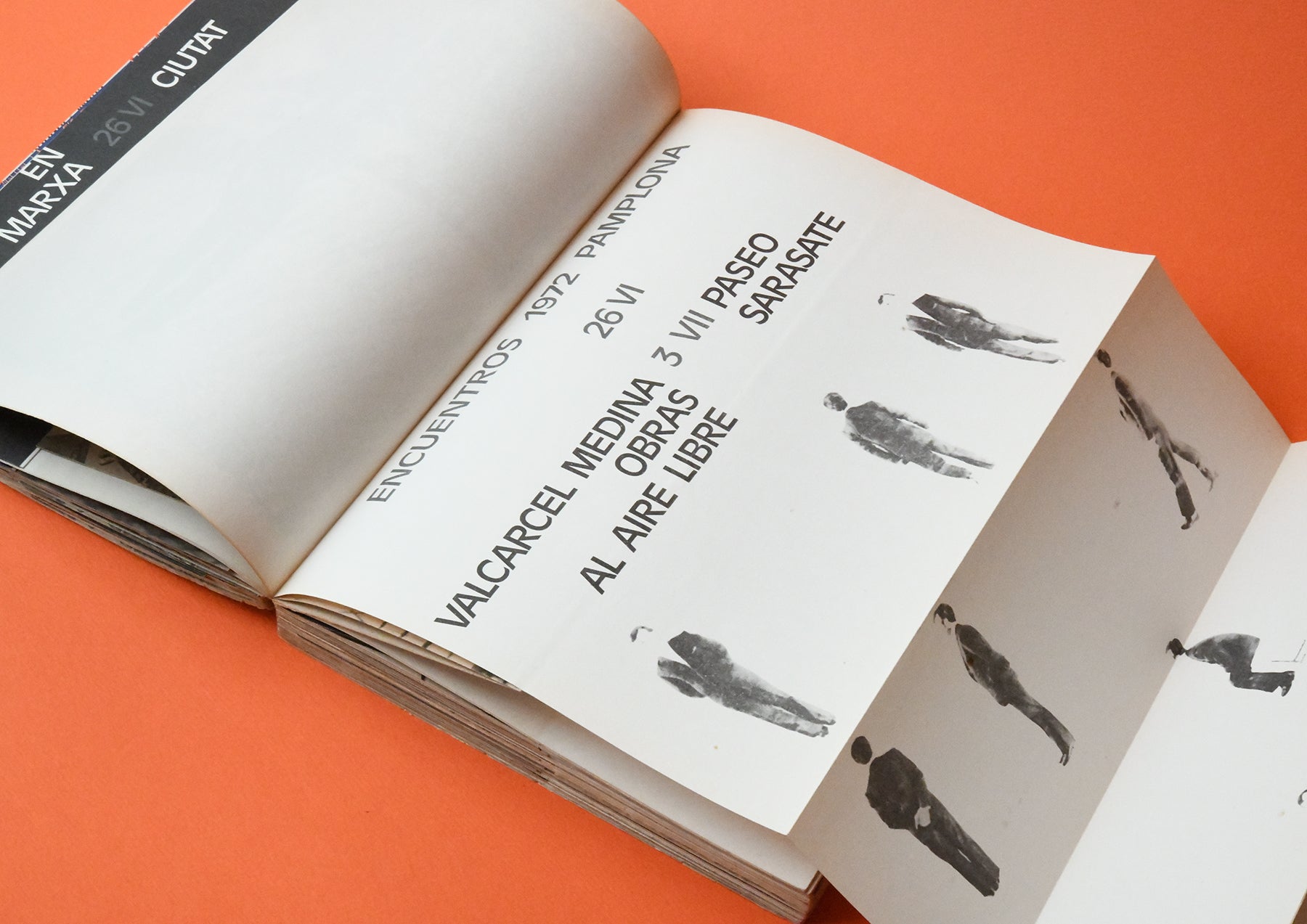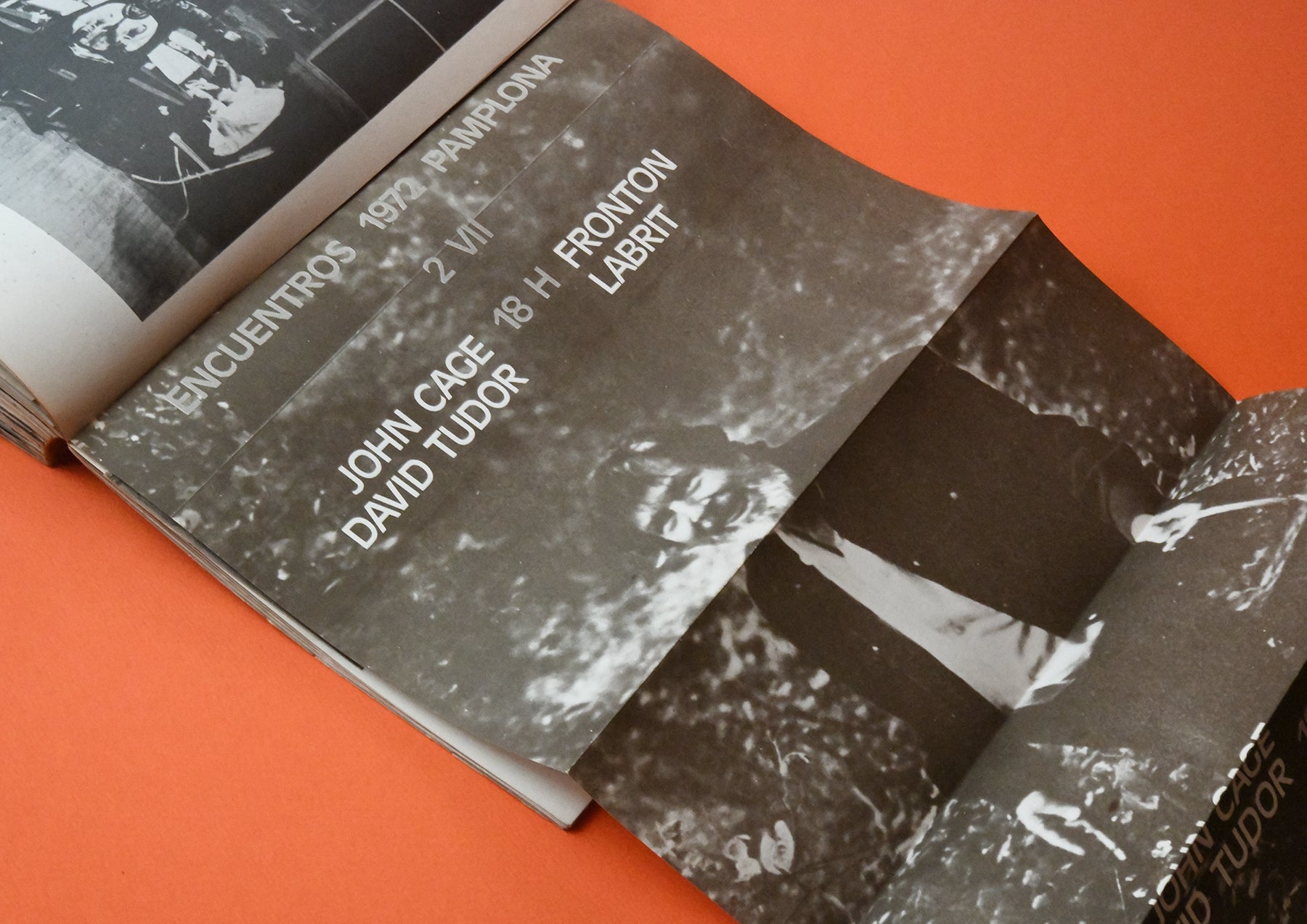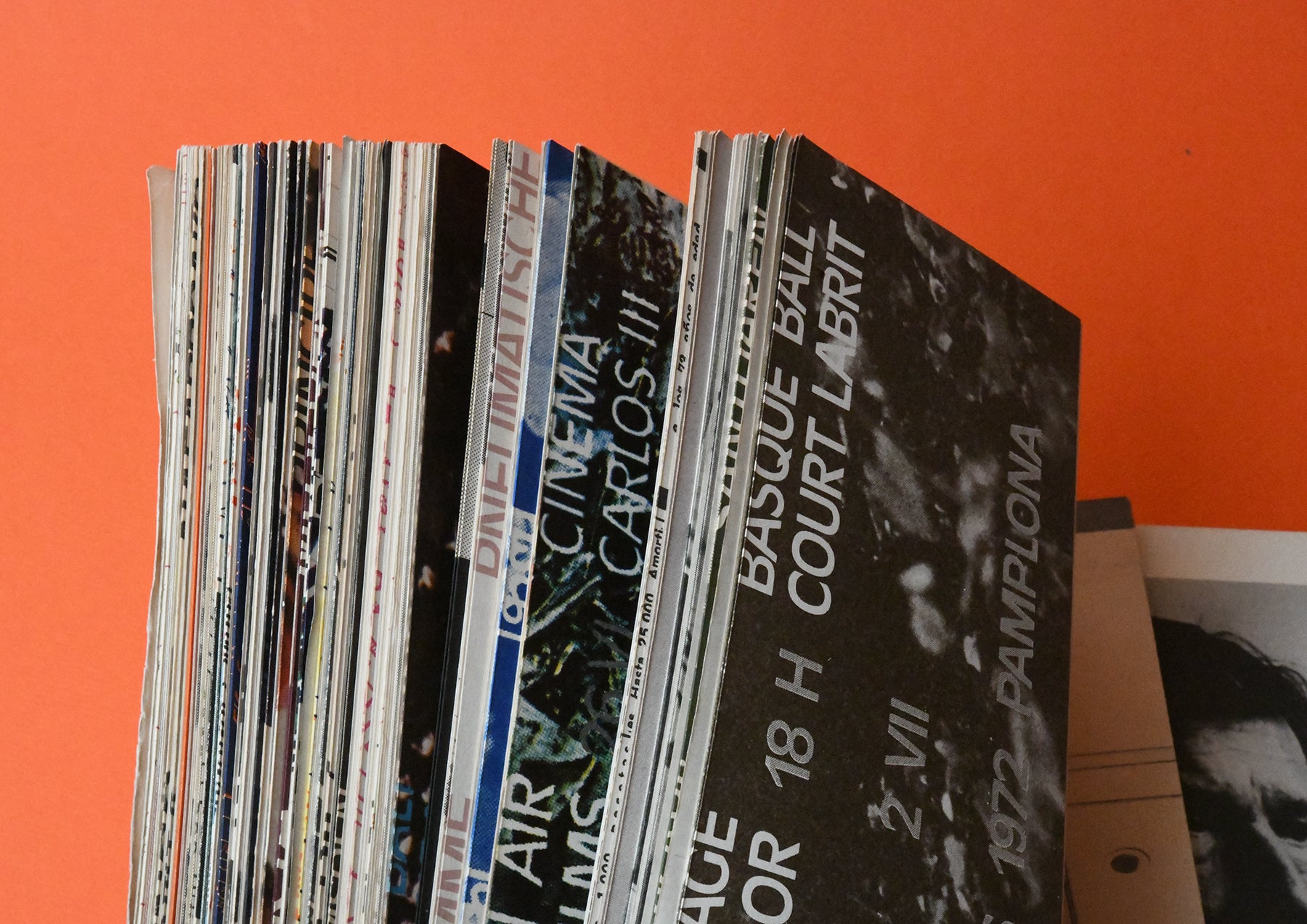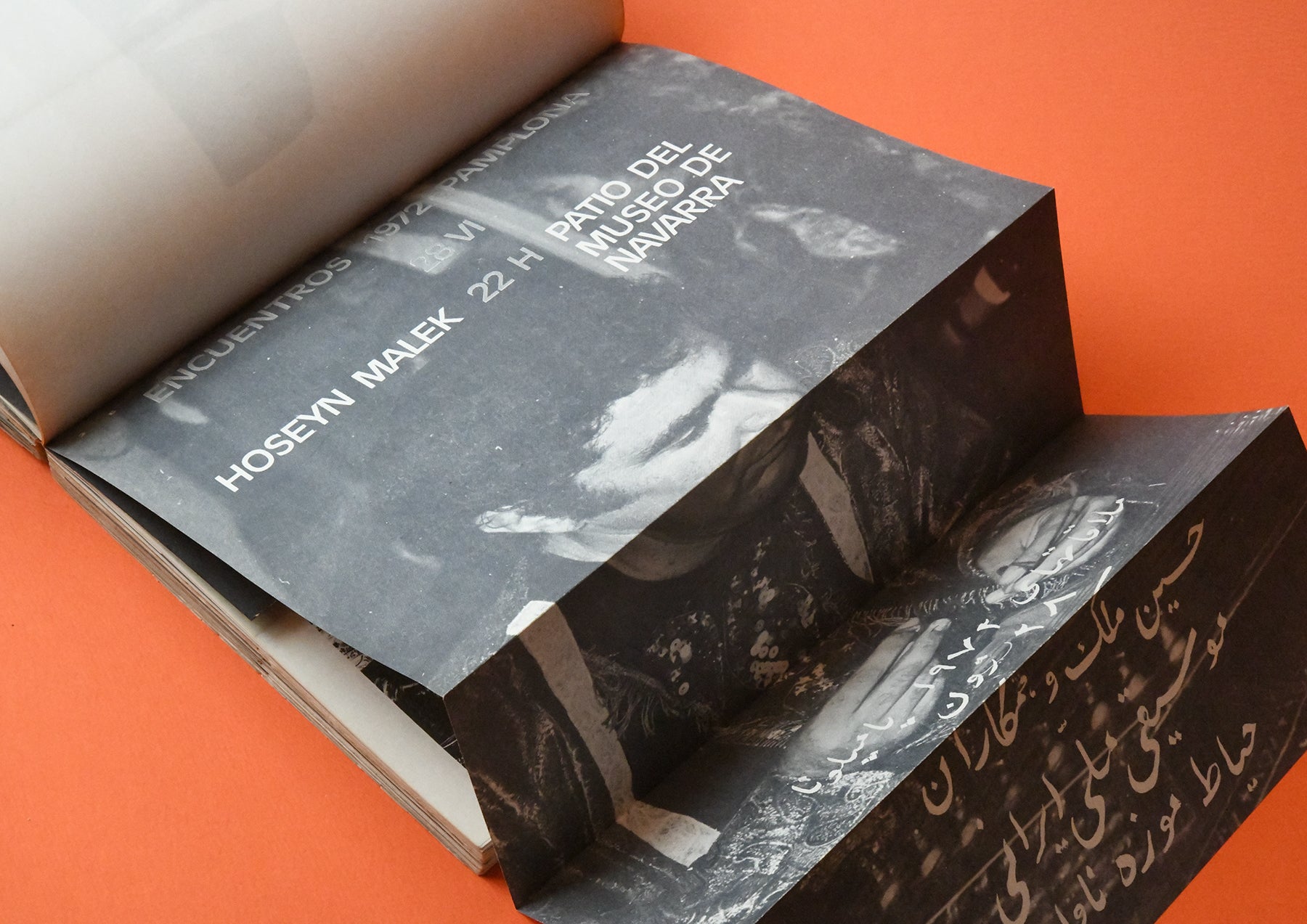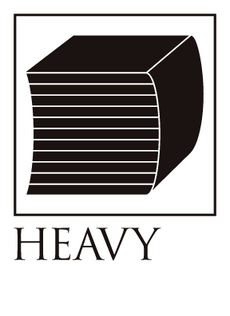ALEA ENCUENTROS 1972 PAMPLONA
Bibliographic Details
- Title
- ALEA ENCUENTROS 1972 PAMPLONA (PAMPLONA ART ENCOUNTER 1972)
- Designer
- José Luis Alexanco / ホセ・ルイス・アレクサンコ
- Publisher
- ORGANIZADOS POR GRUPO ALEA
- Year
- 1972
- Size
- h275 × w210 × d40mm
- Language
- スペイン語・英語(一部)
- Binding
- ソフトカバー
- Printing
- オフセット
背少焼け有 表紙一ヶ所折跡 裏表紙擦れ有 2分の1のページに糊綴じはずれ有
In 1972, in a town in northern Spain
350 avant-garde artists
We have come together.
The bull-running festival "San Fermin Festival"It is also known as the setting for Hemingway's novel "The Sun Also Rises."This is a catalogue of an art festival held in 1972 in Pamplona, a small city in northern Spain.
The event invited 350 avant-garde artists, including Boltanski, Luis Bunuel, John Cage, Auguste de Campos, Fernand Léger, Man Ray, Manzoni, Bruce Nauman, Wolf Vostel, Iannis Xenakis, Shusaku Arakawa, and On Kawara. A diverse range of works were collected, including conceptual art, video art, computer art, plastic art, electronic music, minimalism, action music, and experimental film.
The design was by José Luis Alexanco, a Spanish artist and member of the ALEA electroacoustic music institute that was founded in Pamplona.J.LDesigned by .Aleksanko, it visualizes the concepts, plans, designs, systems, etc. of artists' works. It is a unique binding with pages 2.5 times the size of the main body (including sleeve fold-outs) and half the size of the main body for each artist, group, and work.
The event, organized by the Area with the support of the Huarte family, a family of architects from Navarra who promote social and cultural activities in the fields of music and visual arts, took place over eight days from June 26th to July 3rd, 1972. This endeavor is highly regarded as a good example of how artists and local residents can live together and successfully transform a city.
Especially since the 1970s, as the trend in art has shifted from tableaux to installations, happenings and performances, it seems that there have not been any radical changes in the catalogues that are supposed to be an essential part of exhibitions.
One well-known exception is the exhibition "Art of the Sixties" at the Wallraf-Richartz Museum in Germany. The catalogue for the Wallraf-Richartz Museum (first published in 1969) is known for its unique design, with separate prints of the artworks pasted in and bound together with metal bolts, and this book is one of the few examples of this.
Although "Art of the Sixties" has been sold many times in small shops, this is the first time I've had the chance to get my hands on this book, perhaps due to differences in circulation.
The designer, José Luis Alexanco, was a member of the Computing Center (Centro de Cálculo de la Universidad de Madrid), which was established in 1966 by an agreement between the University of Madrid and IBM. I think it is also possible to see this as an artist's book by Alexanco.
In addition, the Reina Sofia National Museum held an exhibition titled "The Pamplona Encounter: 25 Years Later" in 1997, which demonstrates the importance of this cultural event in post-war Spain.
"Encounters was organized with the express purpose of bringing art into public spaces, and may well have been the largest public art event ever to take place in Spain... In a country where anything artistic is interpreted as an ideological event, it offered an opportunity to get a bird's-eye view of one of the most avant-garde artistic movements of the 1960s."Reina Sofia Museum
Text by Masago Sato
